

The Beatles' 1964 North American tour
- Edit source
- View history
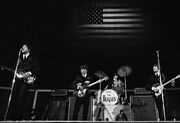
The English rock group the Beatles toured the United States and Canada between 19 August and 20 September 1964. The 32 concerts comprised the second stage of a world tour that started with the band's tour of Europe, Hong Kong, and Australia and finished with their UK Autumn tour. The shows in the United States were a return to the country after their brief February 1964 tour.
- 1 Background
- 2 Repertoire, tour personnel and equipment
- 3.1 Hollywood Bowl
- 3.2 New York and meeting Bob Dylan
- 3.3 Jacksonville and segregation concerns
- 3.4 Kansas City
- 3.5 Return to New York
Background [ ]
Following the Beatles' two week appearance in the United States in February 1964, the band became the most well known group in America. In the six months that followed, the band achieved seventeen Top 40 singles, including six number ones. Their US-only LPs A Hard Day's Night and Something New topped the charts for nine weeks. Their first film, A Hard Day's Night , earned $1.3 million (equivalent to US$12,270,000 in 2022) in its first week. Fans in the United States excitedly anticipated a country-wide tour.
On 11 and 14 August, the Beatles began recording sessions for what would become Beatles for Sale , their fourth studio album. They recorded four songs: "Baby's in Black", "I'm a Loser", "Leave My Kitten Alone" and "Mr. Moonlight". After these recordings, they departed London on 18 August at noon. After two brief stops in Winnipeg and Los Angeles, the group arrived at San Francisco International Airport on 19 August at 6:25 pm, greeted by 9,000 fans.
Repertoire, tour personnel and equipment [ ]
Supporting acts for the tour included the Bill Black Combo, the Exciters, the Righteous Brothers, Jackie DeShannon, Larry Lee and the Leesures (Las Vegas only) and Clarence "Frogman" Henry. For their concert repertoire, the Beatles chose only released songs, placing emphasis on ones where the recorded arrangement could be easily reproduced in live performance.
During shows George Harrison switched between his Gretsch Country Gentleman and Rickenbacker 12-string guitars, though he would sometimes play a different guitar than was used on the original studio recording. The Beatles used new 100-watt amplifiers for all their shows, though their sound was still consistently drowned out by the sound of screaming fans.
Journalist Larry Kane of WFUN in Miami joined the Beatles on their tour. Then 20 years old, Kane sent a letter to Beatles manager Brian Epstein requesting a one-time interview. Epstein responded by inviting him to travel with the group as part of the press party. Kane speculated that Epstein included him because he thought he was a well-known American personality that owned several radio stations.
United States and Canada [ ]
The tour encompassed 32 shows in 25 cities over 31 days. Most shows quickly sold-out, and attendance ranged from 4,000 (New York City) to 28,000 (Baltimore). For each show, the Beatles earned $50,000 minimum (equivalent to US$470,000 in 2022), earning over a million dollars across the entire tour.
Intense screaming and rabid fans characterized shows across the tour. Mobbing crowds necessitated enhanced security measures, including decoy limousines and unlikely transportation for the Beatles, such as delivery vans and ambulances. Variety reported that at the show in Vancouver, 160 girls were treated for injuries and distress after thousands of fans charged at the security barriers in front of the stage. At shows in Cleveland and Kansas City fans broke past police lines to climb onto the stage. In both cases calm was only restored after Beatles press officer Derek Taylor threatened to cancel the rest of the concert.
In Montreal a newspaper reported that Ringo Starr had been threatened. Starr later speculated it was due to antisemitism and an incorrect assumption that he was Jewish. In light of the threat, the Beatles left immediately after their Montreal show for Jacksonville, Florida. Due to Hurricane Dora, their flight diverted to Key West, landing at 3:30 am on 9 September. At their hotel, Paul McCartney and John Lennon drank and talked emotionally late into the night.
Hollywood Bowl [ ]
During their first US visit, Capitol Records planned to record the Beatles' performance on 12 February 1964 at Carnegie Hall, New York City in order to make a live album for US release. The recording did not happen because the American Federation of Musicians refused to grant permission. When the Beatles returned to the US, Capitol still hoped to record and again requested permission of the Federation, this time receiving it. Martin and Capitol's Voyle Gilmore recorded the Beatles performing at the Hollywood Bowl on 23 August 1964. Executives rejected the recording for release due to its poor sound quality. Martin explained the audience's screaming was "like putting a microphone at the end of a 747 jet". The recording remained unreleased until the 1977 album The Beatles at the Hollywood Bowl where it is mixed together with two August 1965 performances.
New York and meeting Bob Dylan [ ]
While the Beatles stayed at Hotel Delmonico in New York City, New York Post writer Al Aronowitz introduced Bob Dylan to them on 28 August. The Beatles initially offered Dylan amphetamine pills but he said he preferred "cheap wine". Dylan suggested they instead smoke marijuana, something the Beatles had only tried a few times before. Starr, not knowing he was supposed to share it, smoked the entire marijuana joint himself. After rolling and smoking another joint, the Beatles laughed continuously while Dylan answered the constantly ringing telephone in the band's hotel suite saying, "This is Beatlemania here." McCartney became convinced he had discovered the meaning of life and asked Beatles roadie Mal Evans to write down his thoughts. McCartney recalls reading the paper the next morning with it saying "There are Seven Levels".
Lennon recalled the meeting in 1970: "When I met Dylan I was quite dumbfounded. I'm pretty much a fan type myself, in a way; I stopped being a 'fan' when I started doing it myself. I never went collecting people's autographs or any of that jive. But if I dig somebody, I really dig them." Dylan recalled in 1971: "I just kept it to myself that I really dug them. Everybody else thought they were for the teenyboppers, that they were gonna pass right away. But it was obvious to me that they had staying power."
Jacksonville and segregation concerns [ ]
We don't like it if there's any segregation, because we're not used to it, y'know. We've never played to segregated audiences before, and it just seems mad to me. It may seem right to some people, but to us, it just seems a bit daft.
The Beatles experienced difficulty in leaving the George Washington Hotel in Jacksonville. Around two dozen police officers escorted the group past 500 fans. It took 15 minutes for the group to travel the 25 feet from the hotel elevator to their waiting limousine.
In July 1964, US President Lyndon Johnson signed the Civil Rights Act prohibiting discrimination "on the basis of race, color, religion, sex, or national origin". The Beatles, opposed to racial segregation, remained concerned that their upcoming Jacksonville, Florida show could still be segregated. On 6 September – a week before the show – they issued a press statement saying, "We will not appear unless Negroes are allowed to sit anywhere". The following day Jacksonville's daily paper, The Florida Times-Union , released an editorial disparaging the Beatles. Entitled "Beatlemania Is A Mark Of A Frenetic Era", the piece described the group as "a passing fad, whose appearance on the scene was perfectly timed and fitted to the mores, morals and ideals of a fast-paced, troubled time." Though the editorial did not mention segregation, Beatles writer Bill DeMain interprets it as arguing that the Beatles were not intelligent enough to comment on social issues.
The Beatles performed at Gator Bowl Stadium on 11 September after receiving assurance from the promoter that the audience would not be segregated. Barry Miles writes that there were never plans to segregate the show. The Beatles initially refused to go on stage until newsreel and television cameramen were forced from the arena.
Kansas City [ ]
During the tour, millionaire Charlie Finley, owner of the Kansas City Athletics baseball team, offered the Beatles a large sum to perform an extra show in Kansas City. With few days off, the Beatles rejected the initial offer, accepting only after it increased to $150,000 (equivalent to $1.4 million in 2022), a higher figure than any American artist had ever received for a single show.
On 17 September, the Beatles played in Kansas City's Municipal Stadium to around 20,000 spectators, roughly half the stadium's capacity. Breaking with their trend of only playing released material, they covered "Kansas City"/"Hey, Hey, Hey, Hey" to what Beatles historian Mark Lewisohn writes was "an especially uproarious reception". The Thursday night show was a net loss for Finley, though he explained afterwards, "I don't consider it any loss at all. The Beatles were brought here for the enjoyment of the children in this area and watching them last night they had complete enjoyment."
Return to New York [ ]
The Beatles performed a charity concert in New York City on 20 September. Titled "An Evening With The Beatles", the show aided the United Cerebral Palsy of New York City and Retarded Infants Services.
Set list [ ]
According to Walter Everett (lead singers appear in parentheses):
- "Twist and Shout" (abbreviated) (John Lennon) or "I Saw Her Standing There" (Paul McCartney)
- "You Can't Do That" (Lennon)
- "All My Loving" (McCartney)
- "She Loves You" (Lennon and McCartney)
- "Things We Said Today" (abbreviated) (McCartney)
- "Roll Over Beethoven" (George Harrison)
- "Can't Buy Me Love" (McCartney)
- "If I Fell" (Lennon)
- "I Want to Hold Your Hand" (Lennon and McCartney)
- "Boys" (Ringo Starr)
- "A Hard Day's Night" (Lennon with McCartney)
- "Long Tall Sally" (McCartney) or "Twist and Shout" (Lennon)
During one of the 19 August Daly City shows, the Beatles added "Till There Was You" (McCartney). On 17 September in Kansas City, they played "Kansas City"/"Hey, Hey, Hey, Hey" (McCartney).
- 1 Jim McCartney
- 2 The Long One
- 3 Dot Rhone
OUR SHOP IS OPEN - COME ON IN www.flashbackshop.com
Visit the shop
The Beatles 1964 First Tour Of The United States – The Photos And The Mania
7th February 2014 marked 50 years since The Beatles first toured the United States. The band were a massive hit . On 9 February 1964 the Fab Four made their first live US television appearance on The Ed Sullivan Show . At 8 P.M, 73 million Americans saw John Paul, George and Ringo play.
On 11 February 1964 The Beatles’ performed in their first US concert, a show at Washington Coliseum, Washington, D.C. Next day, they performed at New York’s Carnegie Hall, New York. They squeezed in another performance on the Sullivan show before returning to the UK on 22 February 1964.
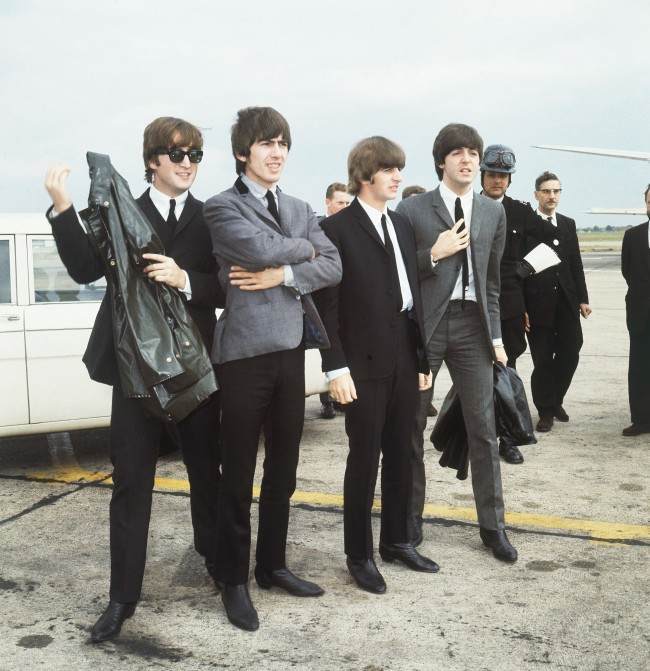
The Beatles leave London airport in 1964. From left: John Lennon, George Harrison, Ringo Starr and Paul McCartney. (AP Photo)
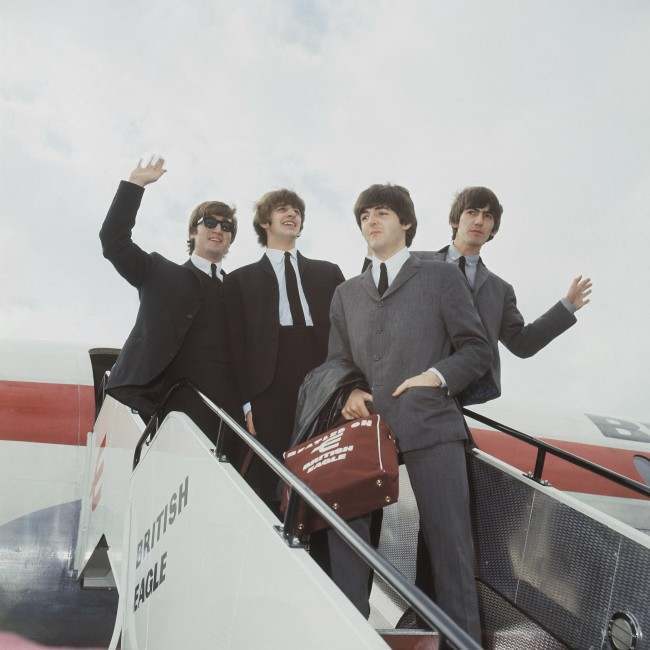
The Beatles leave London airport in 1964. From left: John Lennon, Ringo Starr, Paul McCartney and George Harrison. (AP Photo)
ARRIVING IN NEW YORK

Britain’s Beatles make a windswept arrival in New York on Feb. 7, 1964, as they step down from the plane that brought them from London, at Kennedy airport. From left to right, Ringo Starr, John Lennon, Paul McCartney and George Harrison (AP Photo)

The Beatles arrive at New York’s Kennedy Airport Feb. 7, 1964 for their first U.S. appearance. From left are: John Lennon, Paul McCartney, Ringo Starr and George Harrison. (AP Photo)
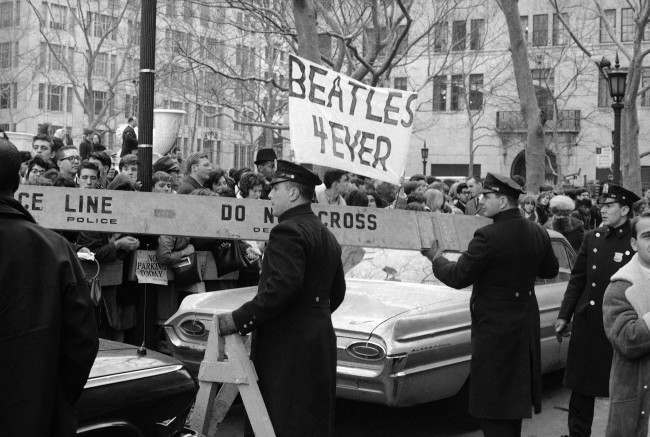
Police man the barricades outside New York’s Plaza Hotel, on Feb. 7, 1964, as Beatle maniacs push forward in hopes of a view of Britain’s singing sensations after their arrival for an American tour. (AP Photo)

Police enforce the barricades outside New York’s Plaza Hotel as fans push forward in hopes of a view of The Beatles after their arrival for an American tour on February 7, 1964. (AP Photo)

The Beatles are shown during a news conference in Forest Hills, N.Y., Feb. 1964. (AP Photo)
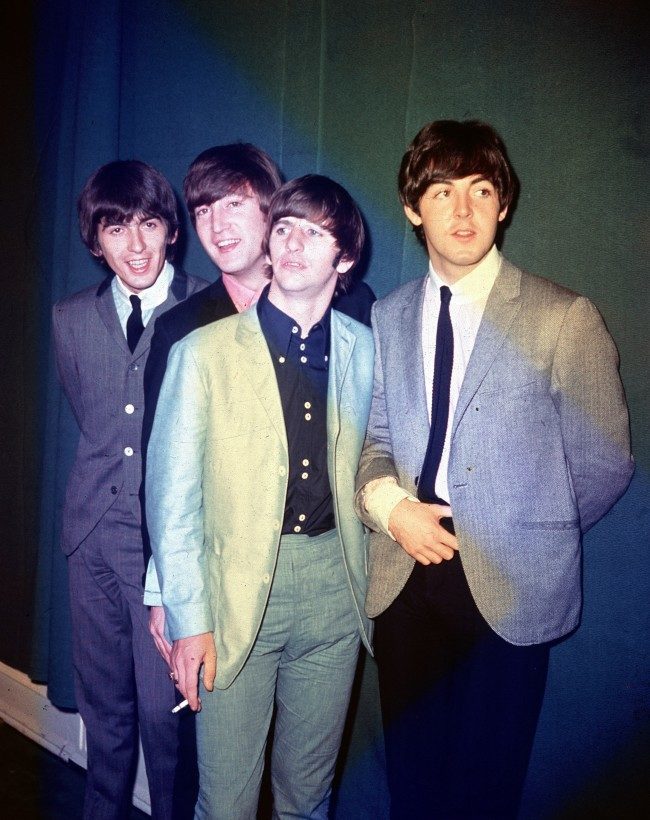
The British rock and roll group The Beatles are seen during their first U.S. tour in 1964. The band members, from left to right, are George Harrison, John Lennon, Ringo Starr and Paul McCartney. (AP Photo)
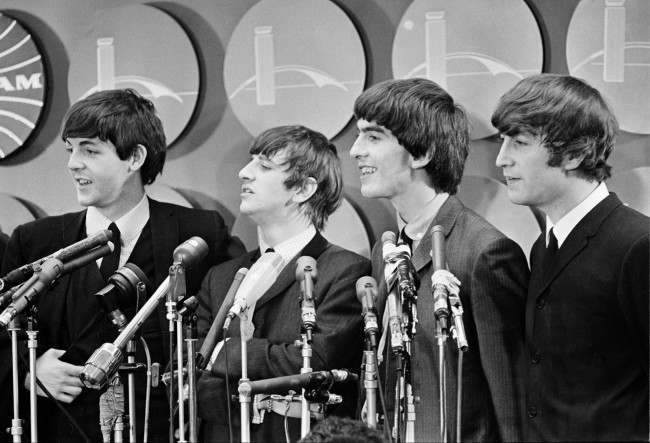
The Beatles meet reporters at Kennedy Airport in New York City, Feb. 7, 1964 on their arrival from London for their first American tour. The band members, from left, are, Paul McCartney, Ringo Starr, George Harrison, and John Lennon. (AP Photo)
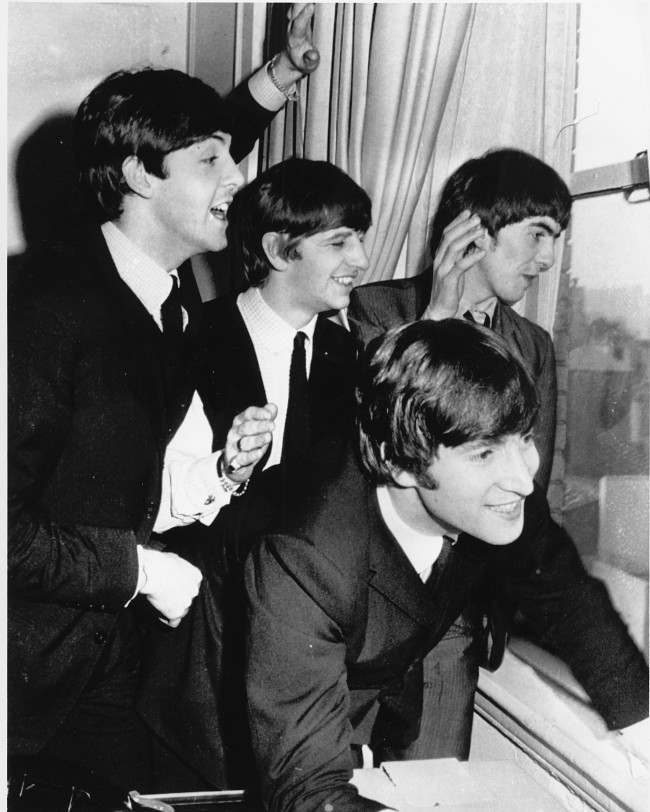
The Beatles wave to fans assembled below their Plaza Hotel window after they arrived in New York City on Feb. 7, 1964 for a short tour of the United States. From left to right are, Paul McCartney, Ringo Starr, John Lennon, and George Harrison. (AP Photo)
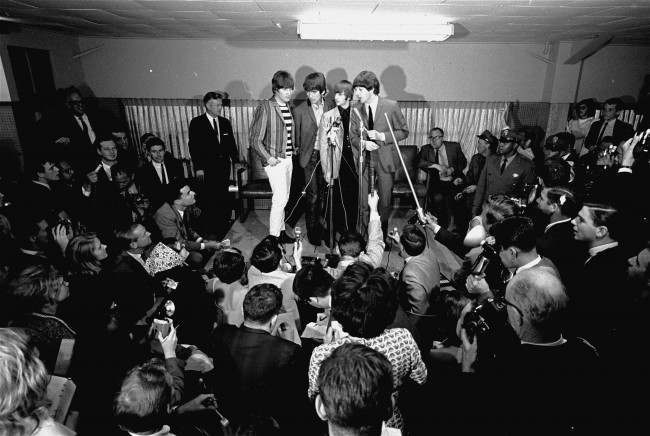
The four members of Britain’s young singing group, the Beatles, stand in front of the microphones in the press room of Kennedy International Airport today during press conference following their arrival, February 7, 1964. From left: John Lennon, George Harrison, Ringo Starr, Paul McCartney. (AP Photo)

The Beatles face the media on arrival at the John F. Kennedy ariport in New York City. Feb. 7, 1964. The British rock and roll group was also greeted by a screaming crowd estimated at 5,000. (AP Photo/Charles Tasnadi)
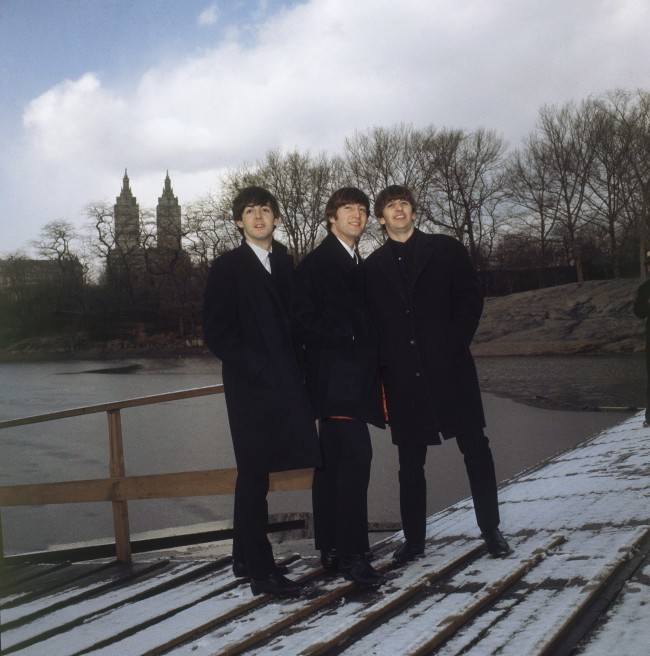
The Beatles walk around New York’s Central Park, Feb. 10, 1964. From left: Paul McCartney, John Lennon and Ringo Starr. (AP Photo)
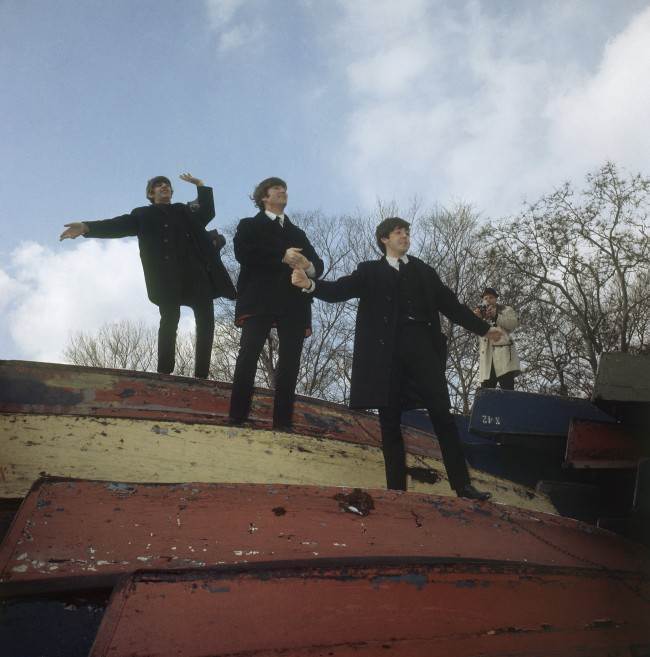
Three members of the Beatles pose on a stack of rowboats in New York’s Central Park, Feb. 10, 1964. From top: Ringo Starr, John Lennon and Paul McCartney. (AP Photo)

John Lennon, center, holds his forehead as 5-year-old Debbie Fyall, of London, England, sits on his shoulders, in New York, Central Park, USA, February 8, 1964. The other two members of the Beatles are Paul McCartney, left, and Ringo Starr, right. (AP Photo/The Beatles)
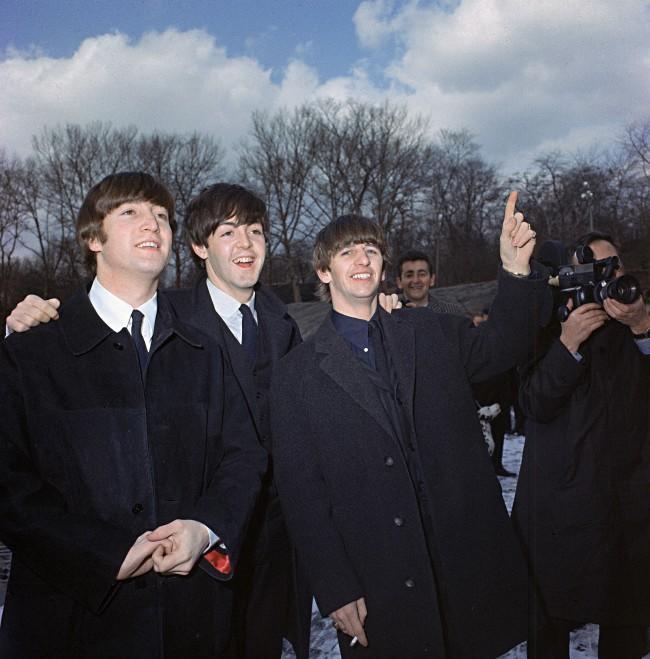
ED SULLIVAN
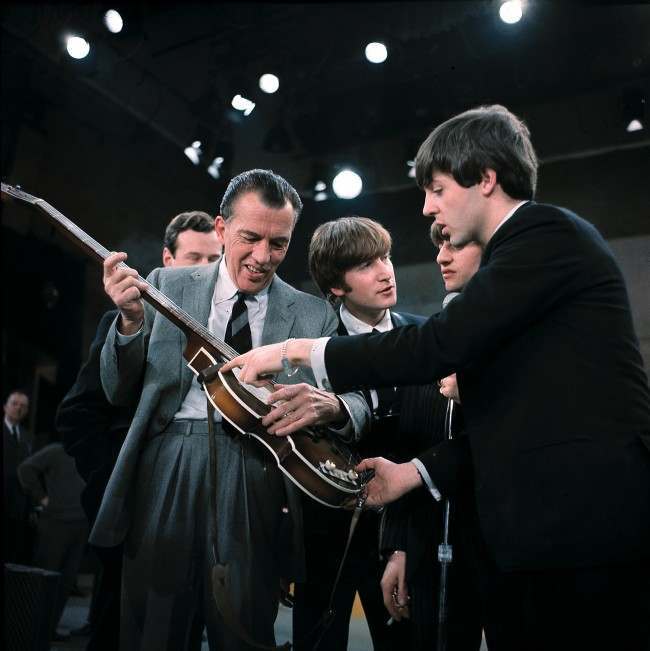
Three of the four member of the British group the Beatles are shown with Ed Sullivan before their live television appearance on The Ed Sullivan Show in New York City, Feb. 10, 1964. From left are, Paul McCartney, Ringo Starr, partial view, George Harrison and Sullivan. (AP Photo)
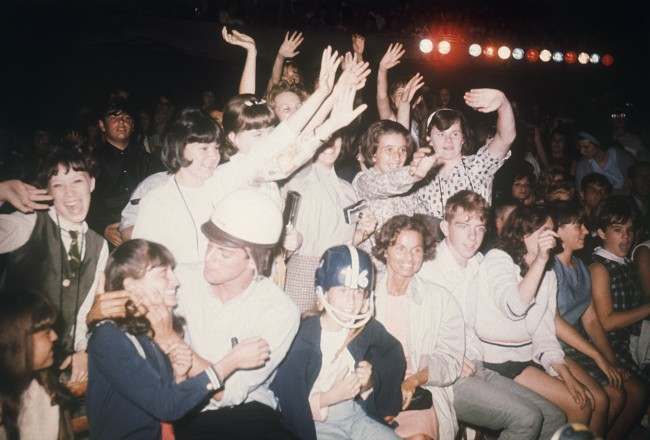
American fans in New York react during the Beatles’ concert on the “Ed Sullivan Show”, Feb. 8, 1964. (AP Photo)
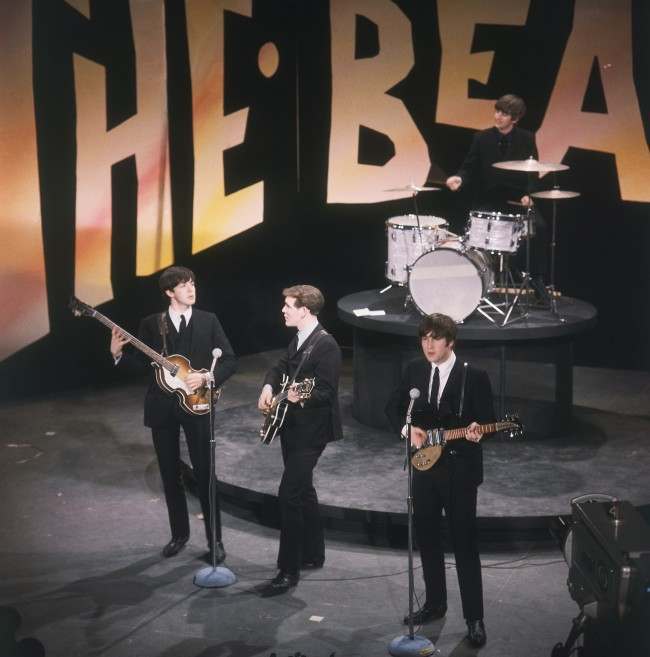
The Beatles, minus an ailing George Harrison, perform on the “Ed Sullivan Show”, Feb. 8, 1964. In front, left to right: Paul McCartney, Neil Aspinall (standing in for Harrison), and John Lennon. On drums is Ringo Starr. (AP Photo)

British rock band the Beatles are shown during rehearsals on the set of the “Ed Sullivan Show” in New York, Feb. 9, 1964. On drums is Ringo Starr, bassist is Paul McCartney, left, and guitarist is John Lennon. (AP Photo)
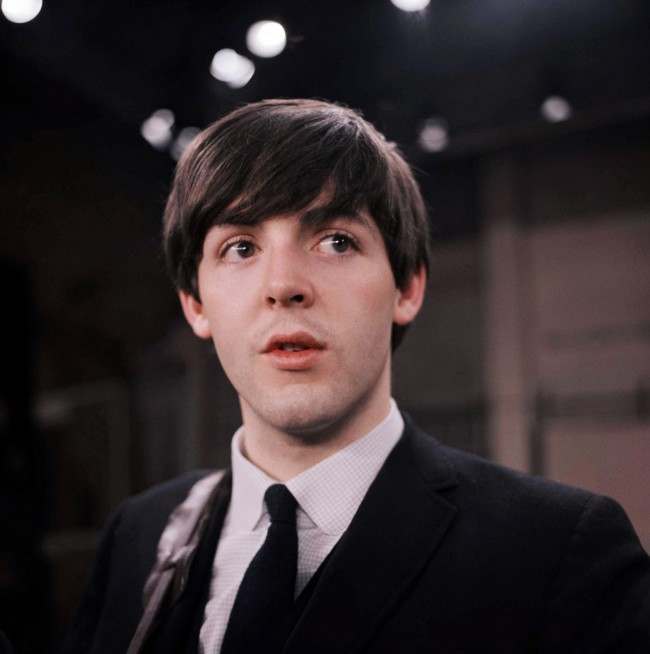
Paul McCartney, bassist for the Beatles, is shown on the set of the Ed Sullivan Show, Feb. 1964. (AP Photo)
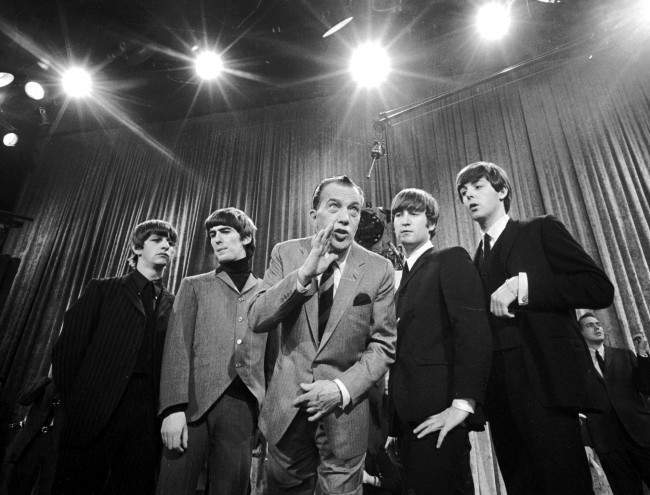
Ed Sullivan, center, stands with The Beatles during a rehearsal for the British group’s first American appearance, on the “Ed Sullivan Show,” in New York. Feb. 9th, 1964. From left: Ringo Starr, George Harrison, Sullivan, John Lennon and Paul McCartney. The rock ‘n’ roll band known as “The Fab Four” was seen by 70 million viewers. “Beatlemania” swept the charts with twenty No.1 hits and more than 100 million records sold. The Beatles broke up in 1970. (AP Photo)

The Beatles perform on the CBS “Ed Sullivan Show” in New York, in this Feb. 9, 1964, file photo. From left, front, are Paul McCartney, George Harrison and John Lennon. Ringo Starr plays drums in the background. The Beatles’ “Love” album is being released on Nov. 21, and is a thorough reinterpretation of their work. (AP Photo/FILE)
WASHINGTON – AN ‘I WAS THERE’ MOMENT
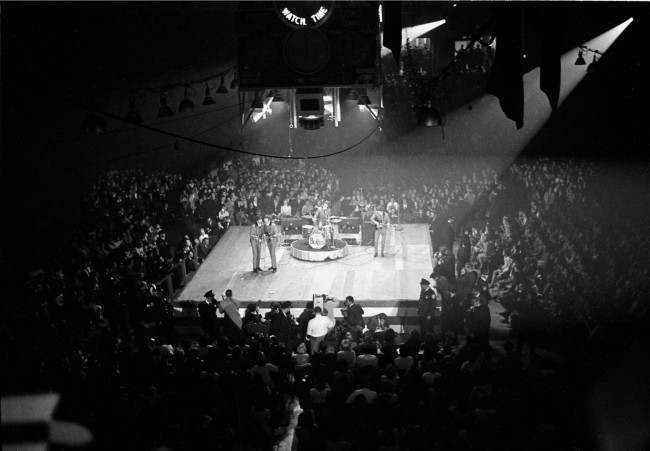
The Beatles perform at the Coliseum in Washington, D.C., Feb. 12, 1964, during their first American tour. The British band members are, in foreground, Paul McCartney and John Lennon; Ringo Starr on drums; and George Harrison on guitar, far right. (AP Photo)
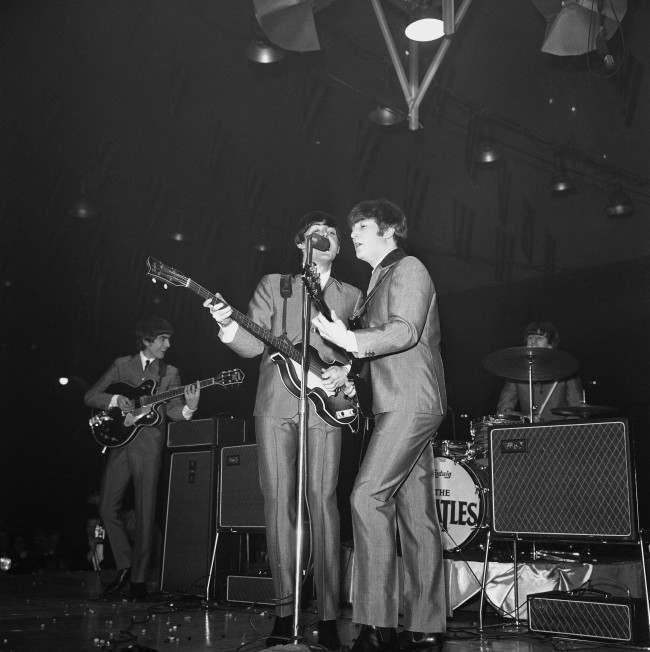
Surrounded by amplifiers and treading jumping beans underfoot, the Beatles swing into their routine during a show at the Coliseum in Washington, Feb. 11, 1964. From left: lead guitarist George Harrison, bassist Paul McCartney, rhythm guitarist John Lennon, and drummer Ringo Starr. The beans were thrown by excited fans. (AP Photo)
DRINKS WITH THE KNOBS
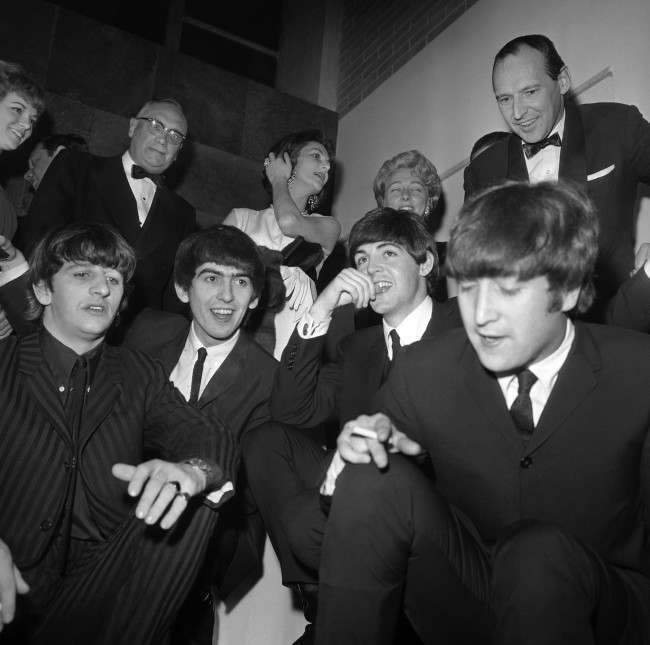
The centre of attraction, four boys from Liverpool enjoy themselves as they attend a charity ball at the British Embassy, in Washington, on Feb. 11, 1964. They are the Beatles , from left: Ringo Starr, George Harrison, Paul McCartney and John Lennon, currently raising a storm on their first tour of the United States. (AP Photo)
NEW YORK GIG
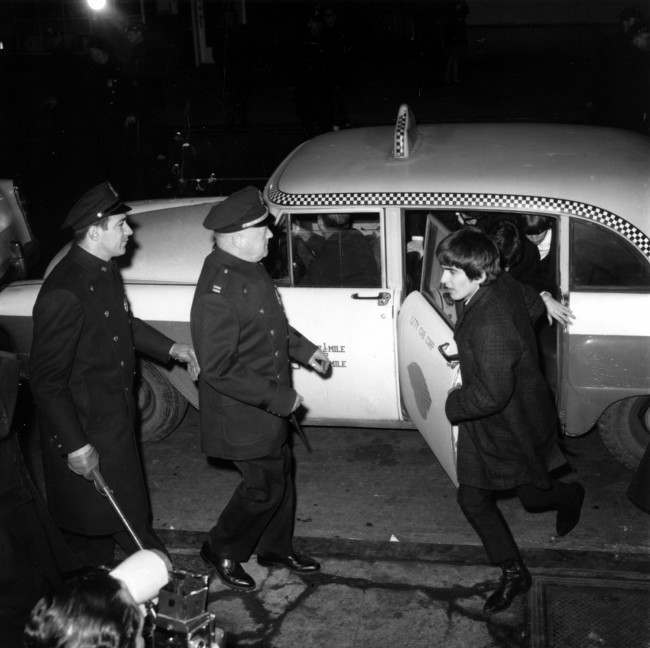
Police security is on hand for the arrival of The Beatles as guitarist George Harrison leads the way from a taxi-cab to Carnegie Hall’s stagedoor on W. 56th St. in New York City on Feb. 12, 1964 . About 2,000 fans are gathered outside the concert hall to catch a glimpse of the British rock and roll band on their first U.S. tour. (AP Photo)
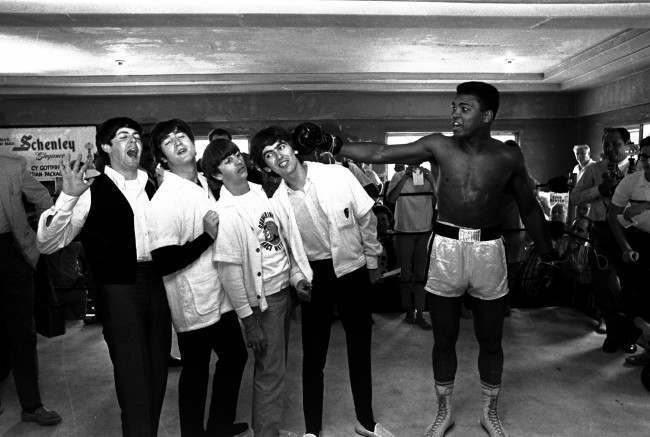
The Beatles, from left, Paul McCartney, John Lennon, Ringo Starr, and George Harrison, take a fake blow from Cassius Clay while visiting the heavyweight contender at his training camp in Miami Beach, Fla. Tuesday February 18,1964.
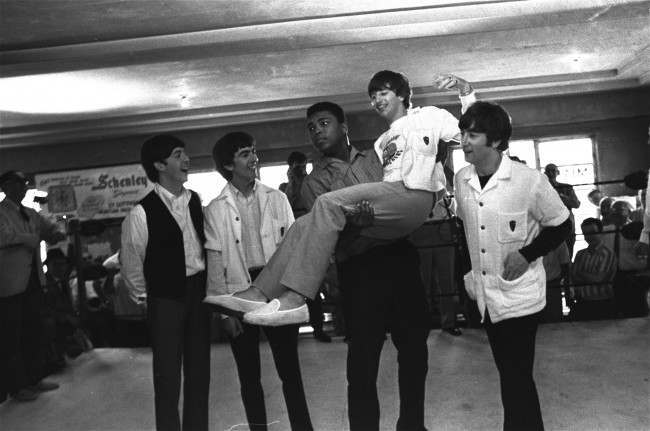
Boxer Cassius Clay lifts Ringo Starr, one of the Beatles into the air while the singers visited Clay’s camp in Miami Beach, Fla. February, 18th, 1964. Others are, from left: Paul McCartney, George Harrison, and John Lennon. (AP Photo)

Ringo Starr of The Beatles Rock group shown on the beach in Florida, February 15, 1964. (AP Photo)
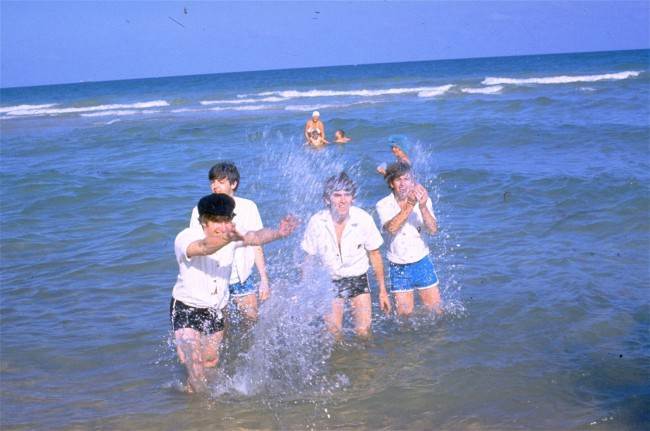
WELCOME HOME
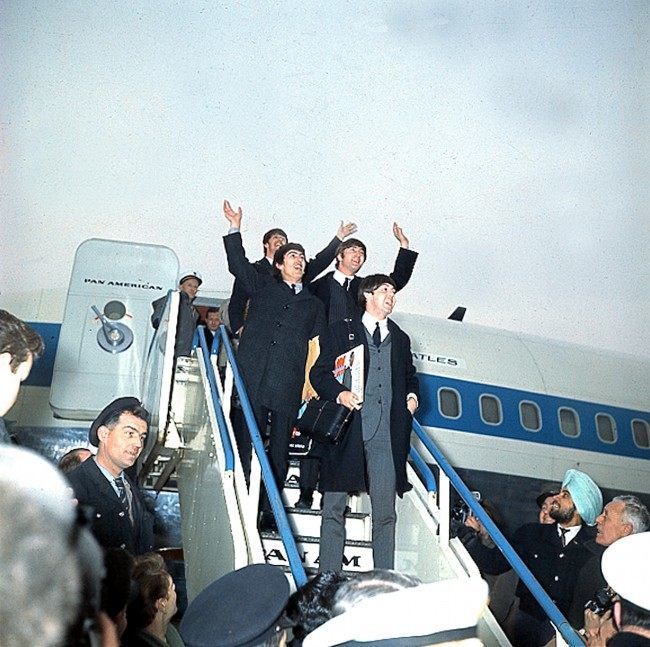
British pop group the Beatles wave as they arrive at London Airport, England, in 1964 after their successful U.S. tour. (AP Photo)

A Beatle fan claws at a metal fence as she welcomes the pop group on their arrival at London Airport, England on Feb 22, 1964. Some 5,000 people, many of whom had waited overnight, were at the airport. (AP Photo)
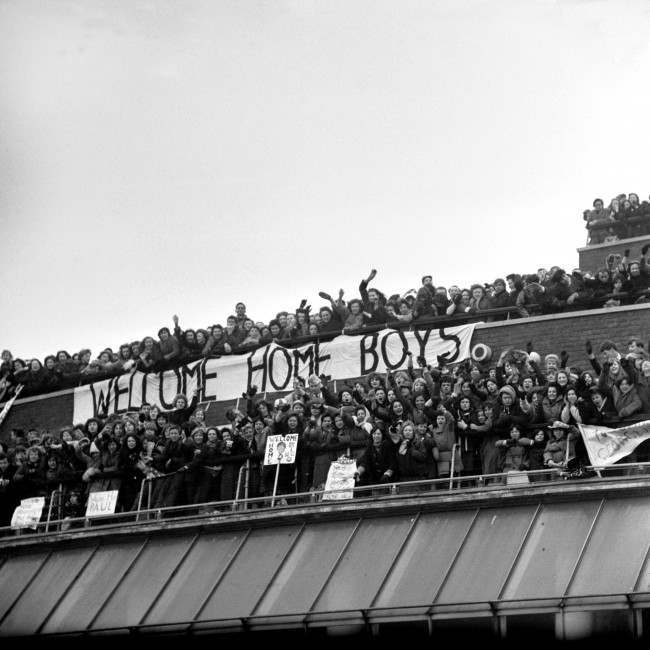
Four thousand fans of The Beatles at London Airport to greet them on their return from a tour of the United States.
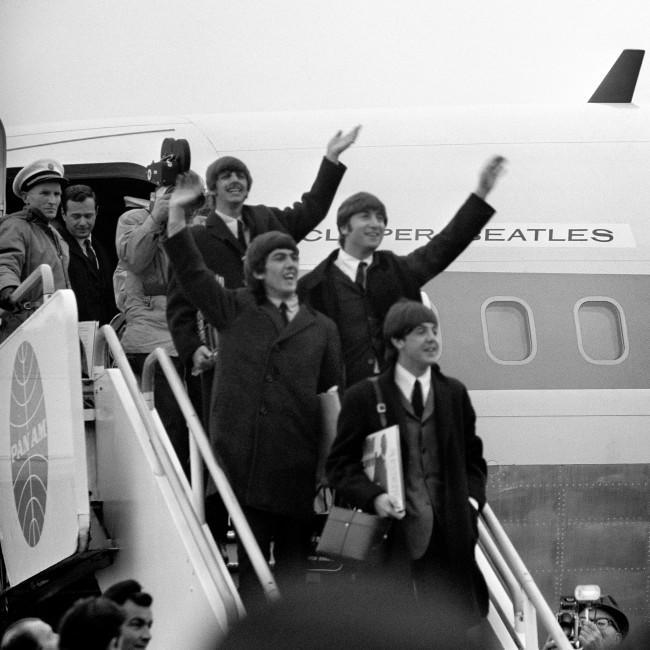
Paul McCartney looks up and acknowledges the waves and screams shortly after arriving with the other three Beatles at London Airport from America.
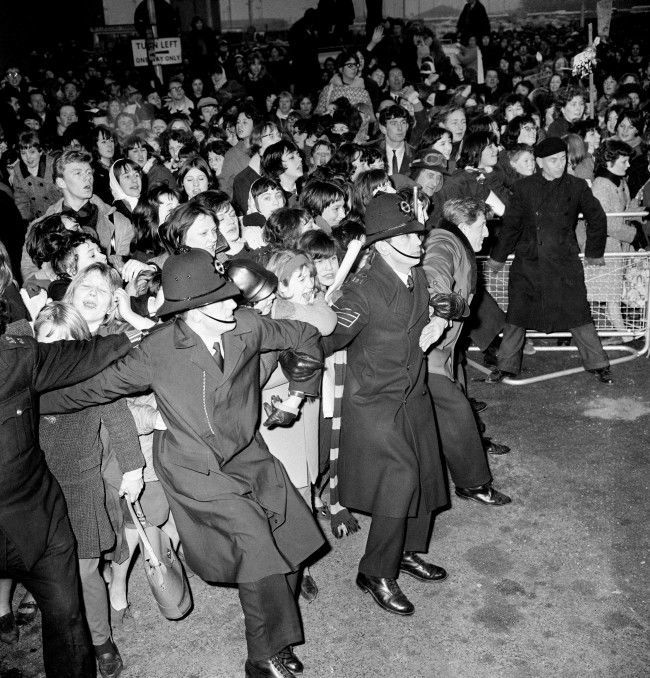
Fans press forward to the restraining linked arms of a chain of extra policemen on duty at London Airport when the Beatles returned from a tour of the United States.
Would you like to support Flashbak?
Please consider making a donation to our site . We don't want to rely on ads to bring you the best of visual culture. You can also support us by signing up to our Mailing List . And you can also follow us on Facebook , Instagram and Twitter . For great art and culture delivered to your door, visit our shop .
OUR SHOP IS OPEN - COME ON IN
www.flashbackshop.com
OUR SHOP IS OPEN – PRINTS, CARDS, TEES & MORE


15% off 3 or more T-Shirts

Recent Posts
Gods From Space: When London Taxi Diver George King Met Jesus And Other Aliens
Watch TV-CBGB – A Punk Sitcom From 1981
The Avicenna Canon Medicinae – An Illustrated Medical Book From 13th Century Paris
Derek Jarman’s Home In Dungeness: Where Jesus Walked In The Garden
East of the Sun and West of the Moon With Illustrations by Kay Nielsen, 1914
Editor’s picks, collect our postcards.

You Might Also Like
The Beatles' 1964 North American tour
The English rock group the Beatles toured the United States and Canada between 19 August and 20 September 1964. The 32 concerts comprised the second stage of a world tour that started with the band's tour of Europe, Hong Kong, and Australia and finished with their UK Autumn tour. The shows in the United States were a return to the country after their brief February 1964 tour.
Repertoire, tour personnel and equipment
United states and canada, hollywood bowl, new york and meeting bob dylan, jacksonville and segregation concerns, kansas city, return to new york.
Following the Beatles ' two week appearance in the United States in February 1964, the band became the most well known group in America. [1] In the six months that followed, the band achieved seventeen Top 40 singles, including six number ones. [2] Their US-only LPs A Hard Day's Night and Something New topped the charts for nine weeks. [3] Their first film, A Hard Day's Night , earned $1.3 million ( equivalent to US$ 12,270,000 in 2022 ) in its first week. [4] Fans in the United States excitedly anticipated a country-wide tour. [3]
On 11 and 14 August, the Beatles began recording sessions for what would become Beatles for Sale , their fourth studio album. [3] They recorded four songs: " Baby's in Black ", " I'm a Loser ", " Leave My Kitten Alone " and " Mr. Moonlight ". [5] After these recordings, they departed London on 18 August at noon. After two brief stops in Winnipeg and Los Angeles , the group arrived at San Francisco International Airport on 19 August at 6:25 pm, greeted by 9,000 fans. [6]
Supporting acts for the tour included the Bill Black Combo , the Exciters , the Righteous Brothers , Jackie DeShannon , Larry Lee and the Leesures (Las Vegas only) and Clarence "Frogman" Henry . [7] For their concert repertoire, the Beatles chose only released songs, placing emphasis on ones where the recorded arrangement could be easily reproduced in live performance. [3]
During shows George Harrison switched between his Gretsch Country Gentleman and Rickenbacker 12-string guitars, though he would sometimes play a different guitar than was used on the original studio recording. The Beatles used new 100- watt amplifiers for all their shows, though their sound was still consistently drowned out by the sound of screaming fans. [3]
Journalist Larry Kane of WFUN in Miami joined the Beatles on their tour. [8] Then 20 years old, Kane sent a letter to Beatles manager Brian Epstein requesting a one-time interview. Epstein responded by inviting him to travel with the group as part of the press party. [9] Kane speculated that Epstein included him because he thought he was a well-known American personality that owned several radio stations. [10]

The tour encompassed 32 shows in 25 cities over 31 days. [8] Most shows quickly sold-out, and attendance ranged from 4,000 ( New York City ) to 28,000 ( Baltimore ). [2] For each show, the Beatles earned $50,000 minimum ( equivalent to US$ 470,000 in 2022 ), earning over a million dollars across the entire tour. [11]
Intense screaming and rabid fans characterized shows across the tour. [12] Mobbing crowds necessitated enhanced security measures, including decoy limousines and unlikely transportation for the Beatles, such as delivery vans and ambulances . [2] Variety reported that at the show in Vancouver , 160 girls were treated for injuries and distress after thousands of fans charged at the security barriers in front of the stage. [13] At shows in Cleveland and Kansas City fans broke past police lines to climb onto the stage. In both cases calm was only restored after Beatles press officer Derek Taylor threatened to cancel the rest of the concert. [14]
In Montreal a newspaper reported that Ringo Starr had been threatened. Starr later speculated it was due to antisemitism and an incorrect assumption that he was Jewish . [15] In light of the threat, the Beatles left immediately after their Montreal show for Jacksonville, Florida . [15] Due to Hurricane Dora , their flight diverted to Key West , landing at 3:30 am on 9 September. [14] At their hotel, Paul McCartney and John Lennon drank and talked emotionally late into the night. [16] [nb 1]
During their first US visit, Capitol Records planned to record the Beatles' performance on 12 February 1964 at Carnegie Hall , New York City in order to make a live album for US release. The recording did not happen because the American Federation of Musicians refused to grant permission. When the Beatles returned to the US, Capitol still hoped to record and again requested permission of the Federation, this time receiving it. [17] Martin and Capitol's Voyle Gilmore recorded the Beatles performing at the Hollywood Bowl on 23 August 1964. [18] Executives rejected the recording for release due to its poor sound quality. [17] Martin explained the audience's screaming was "like putting a microphone at the end of a 747 jet". [19] The recording remained unreleased until the 1977 album The Beatles at the Hollywood Bowl where it is mixed together with two August 1965 performances. [20]
While the Beatles stayed at Hotel Delmonico in New York City, New York Post writer Al Aronowitz introduced Bob Dylan to them on 28 August. [21] The Beatles initially offered Dylan amphetamine pills but he said he preferred "cheap wine". [22] Dylan suggested they instead smoke marijuana , something the Beatles had only tried a few times before. Starr, not knowing he was supposed to share it, smoked the entire marijuana joint himself. [21] After rolling and smoking another joint, the Beatles laughed continuously while Dylan answered the constantly ringing telephone in the band's hotel suite saying, "This is Beatlemania here." [23] McCartney became convinced he had discovered the meaning of life and asked Beatles roadie Mal Evans to write down his thoughts. McCartney recalls reading the paper the next morning with it saying "There are Seven Levels". [24]
Lennon recalled the meeting in 1970: "When I met Dylan I was quite dumbfounded. I'm pretty much a fan type myself, in a way; I stopped being a 'fan' when I started doing it myself. I never went collecting people's autographs or any of that jive. But if I dig somebody, I really dig them." [25] Dylan recalled in 1971: "I just kept it to myself that I really dug them. Everybody else thought they were for the teenyboppers , that they were gonna pass right away. But it was obvious to me that they had staying power." [26]
We don't like it if there's any segregation, because we're not used to it, y'know. We've never played to segregated audiences before, and it just seems mad to me. It may seem right to some people, but to us, it just seems a bit daft. [27]
– Paul McCartney , interviewed by Larry Kane , 20 August 1964
The Beatles experienced difficulty in leaving the George Washington Hotel in Jacksonville. Around two dozen police officers escorted the group past 500 fans. It took 15 minutes for the group to travel the 25 feet from the hotel elevator to their waiting limousine. [28]
In July 1964, US President Lyndon Johnson signed the Civil Rights Act prohibiting discrimination "on the basis of race, color, religion, sex, or national origin". [29] The Beatles, opposed to racial segregation , remained concerned that their upcoming Jacksonville, Florida show could still be segregated. On 6 September – a week before the show – they issued a press statement saying, "We will not appear unless Negroes are allowed to sit anywhere". [29] The following day Jacksonville's daily paper, The Florida Times-Union , released an editorial disparaging the Beatles. Entitled "Beatlemania Is A Mark Of A Frenetic Era", the piece described the group as "a passing fad, whose appearance on the scene was perfectly timed and fitted to the mores, morals and ideals of a fast-paced, troubled time." [29] Though the editorial did not mention segregation, Beatles writer Bill DeMain interprets it as arguing that the Beatles were not intelligent enough to comment on social issues. [29]

The Beatles performed at Gator Bowl Stadium on 11 September after receiving assurance from the promoter that the audience would not be segregated. [14] Barry Miles writes that there were never plans to segregate the show. [30] The Beatles initially refused to go on stage until newsreel and television cameramen were forced from the arena. [31]
During the tour, Charlie Finley , a millionaire who owned the Kansas City Athletics baseball team, [32] offered the Beatles a large sum to perform an extra show in Kansas City . [2] [nb 2] With few days off, the Beatles rejected the initial offer, accepting only after it increased to $150,000 (equivalent to $ 1.4 million in 2022 ), a higher figure than any American artist had ever received for a single show. [35]
On 17 September, the Beatles played in Kansas City's Municipal Stadium to around 20,000 spectators, roughly half the stadium's capacity. [34] [32] Breaking with their trend of only playing released material, they covered " Kansas City "/" Hey, Hey, Hey, Hey " to what Beatles historian Mark Lewisohn writes was "an especially uproarious reception". [36] The Thursday night show was a net loss for Finley, though he explained afterwards, "I don't consider it any loss at all. The Beatles were brought here for the enjoyment of the children in this area and watching them last night they had complete enjoyment." [34]
The Beatles performed a charity concert in New York City on 20 September. Titled "An Evening With The Beatles", the show aided the United Cerebral Palsy of New York City and Retarded Infants Services. [37]
I was too young to appreciate it. Who knew the Beatles and their tour of 1964 would be the benchmark for all time? After all, this was just a rock-and-roll group. You could feel the insanity, but you didn't feel the history then. After that experience, almost every other was downhill for me. [38]
– Journalist Ivor Davis, 2003
Writer June Skinner Sawyers describes the tour as "the first major rock-and-roll concert tour in the history of popular music ". [8]
In response to Larry Kane asking if there was anything he cherished about the tour, Lennon replied: "Well, just the whole thing. It's been fantastic. We will probably never do another tour like it. It could never be the same as this one and it's probably something we will remember the rest of our days. It's just been marvelous." [39]
The Beatles returned to North America in 1965 and 1966 . [40]
According to Walter Everett (lead singers appear in parentheses): [3]
- " Twist and Shout " (abbreviated) ( John Lennon ) or " I Saw Her Standing There " ( Paul McCartney )
- " You Can't Do That " (Lennon)
- " All My Loving " (McCartney)
- " She Loves You " (Lennon and McCartney) [nb 3]
- " Things We Said Today " (abbreviated) (McCartney)
- " Roll Over Beethoven " ( George Harrison )
- " Can't Buy Me Love " (McCartney)
- " If I Fell " (Lennon)
- " I Want to Hold Your Hand " (Lennon and McCartney)
- " Boys " ( Ringo Starr )
- " A Hard Day's Night " (Lennon with McCartney)
- " Long Tall Sally " (McCartney) or "Twist and Shout" (Lennon)
During one of the 19 August Daly City shows, the Beatles added " Till There Was You " (McCartney). On 17 September in Kansas City , they played " Kansas City "/" Hey, Hey, Hey, Hey " (McCartney). [41]
According to Mark Lewisohn [42] and Walter Everett: [18]
- List of the Beatles' live performances
- ↑ After Lennon's murder , McCartney commemorated their Key West night in his 1982 song " Here Today ". [16]
- ↑ The Beatles Anthology writes the initial offer was $60,000, [33] while author Barry Miles writes it was $100,000 [34] (equivalent to $600,000 and $900,000 in 2022, respectively).
- ↑ Some shows omitted "She Loves You". [6]
Related Research Articles
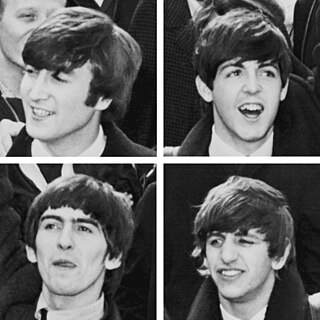
The Beatles were an English rock band formed in Liverpool in 1960, comprising John Lennon, Paul McCartney, George Harrison and Ringo Starr. They are regarded as the most influential band of all time and were integral to the development of 1960s counterculture and the recognition of popular music as an art form. Rooted in skiffle, beat and 1950s rock 'n' roll, their sound incorporated elements of classical music and traditional pop in innovative ways. The band also explored music styles ranging from folk and Indian music to psychedelia and hard rock. As pioneers in recording, songwriting and artistic presentation, the Beatles revolutionized many aspects of the music industry and were often publicized as leaders of the era's youth and sociocultural movements.
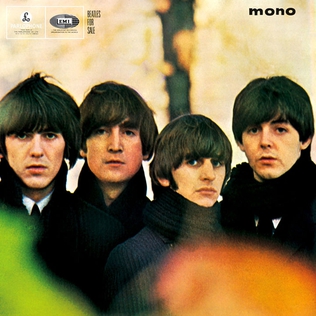
Beatles for Sale is the fourth studio album by the English rock band the Beatles. It was released on 4 December 1964 in the United Kingdom on EMI's Parlophone label. The album marked a departure from the upbeat tone that had characterised the Beatles' previous work, partly due to the band's exhaustion after a series of tours that had established them as a worldwide phenomenon in 1964. Beatles for Sale was not widely available in the US until 1987, when the Beatles' catalogue was standardised for release on CD. Instead, eight of the album's fourteen tracks appeared on Capitol Records' concurrent release, Beatles '65 , issued in North America only.
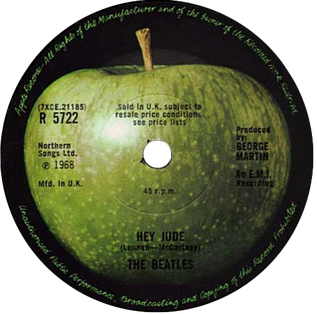
" Hey Jude " is a song by the English rock band the Beatles that was released as a non-album single in August 1968. It was written by Paul McCartney and credited to the Lennon–McCartney partnership. The single was the Beatles' first release on their Apple record label and one of the "First Four" singles by Apple's roster of artists, marking the label's public launch. "Hey Jude" was a number-one hit in many countries around the world and became the year's top-selling single in the UK, the US, Australia and Canada. Its nine-week run at number one on the Billboard Hot 100 tied the all-time record in 1968 for the longest run at the top of the US charts, a record it held for nine years. It has sold approximately eight million copies and is frequently included on music critics' lists of the greatest songs of all time.

" Things We Said Today " is a song by the English rock band the Beatles, written by Paul McCartney and credited to Lennon–McCartney. It was released in July 1964 as the B-side to the single "A Hard Day's Night" and on their album of the same name, except in North America, where it appeared on the album Something New . The band recorded the song twice for BBC Radio and regularly performed an abbreviated version during their 1964 North American tour.

" You're Going to Lose That Girl " is a song by the English rock band the Beatles from their 1965 album and film Help! Credited to the Lennon–McCartney songwriting partnership, the song was mostly written by John Lennon with contributions from Paul McCartney.
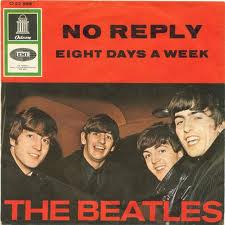
" No Reply " is a song by the English rock band the Beatles from their 1964 album Beatles for Sale . In North America, it was issued on Capitol Records' variant on the British release, Beatles '65 . The song was written mainly by John Lennon and credited to Lennon–McCartney. Lennon originally gave the song to another artist managed by Brian Epstein, Tommy Quickly, in June 1964, but Quickly decided not to use it. The Beatles recorded the track in London soon after returning from their first full tour of the United States. The lyrics typify Lennon's more introspective and mature songwriting on the Beatles for Sale album.
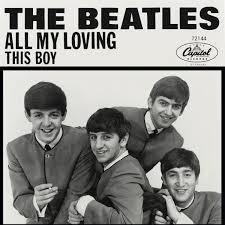
" All My Loving " is a song by the English rock band the Beatles, from their second UK album With the Beatles (1963). It was written by Paul McCartney, and produced by George Martin. Though not officially released as a single in the United Kingdom or the United States, the song drew considerable radio airplay, prompting EMI to issue it as the title track of an EP. The song was released as a single in Canada, where it became a number one hit. The Canadian single was imported into the US in enough quantities to peak at number 45 on the US Billboard Hot 100 in April 1964.
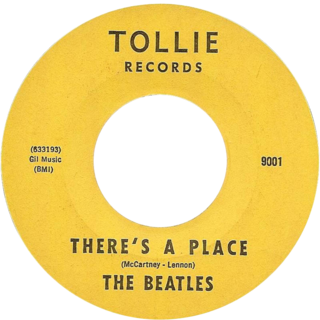
" There's a Place " is a song by the English rock band the Beatles from their debut album, Please Please Me , released in March 1963. It was written primarily by John Lennon and credited to McCartney–Lennon. In the United States, the song was released in July 1963 on the group's first US LP, Introducing... The Beatles , later reissued in January 1964 as Beatlemania surged there. It was also issued as a non-album single in the US, in March 1964, as the B-side to "Twist and Shout", reaching number 74 in the Billboard Hot 100 .

" I'm a Loser " is a song by the English rock band the Beatles, originally released on Beatles for Sale in the United Kingdom, later released on Beatles '65 in the United States, both in 1964. Written by John Lennon, and credited to Lennon–McCartney, it was considered for release as a single until Lennon wrote "I Feel Fine".
" Hey Bulldog " is a song by the English rock band the Beatles released on their 1969 soundtrack album Yellow Submarine . Credited to Lennon–McCartney, but written primarily by John Lennon, it was finished in the recording studio by both Lennon and Paul McCartney. The song was recorded during the filming of the "Lady Madonna" promotional film, and, with "Lady Madonna", is one of the few Beatles songs based on a piano riff.
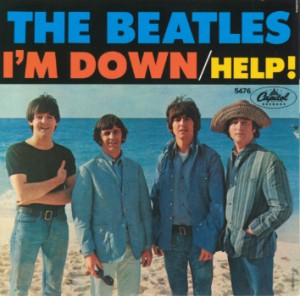
" I'm Down " is a song by the English rock band the Beatles, written by Paul McCartney and credited to Lennon–McCartney. It was released on a non-album single as the B-side to "Help!" in July 1965. The song originated in McCartney's attempt to write a song in the style of Little Richard, whose song "Long Tall Sally" the band regularly covered.
" She's a Woman " is a song by the English rock band the Beatles, written primarily by Paul McCartney and credited to Lennon–McCartney. It was released on a non-album single in November 1964 as the B-side to "I Feel Fine", except in North America, where it also appeared on the album Beatles '65 , released in December 1964. Though it was the B-side, it charted in the US, reaching number four on the Billboard Hot 100 and number eight on the Cash Box Top 100 . The song originated in McCartney's attempt to write a song in the style of Little Richard. The lyrics include the first reference to drugs in a Beatles song, with the line "turn(s) me on" referring to marijuana.

" Kansas City " is a rhythm and blues song written by Jerry Leiber and Mike Stoller in 1952. First recorded by Little Willie Littlefield the same year, as "K. C. Loving", the song later became a chart-topping hit when it was recorded by Wilbert Harrison in 1959. "Kansas City" is one of Leiber and Stoller's "most recorded tunes, with more than three hundred versions", with several appearing in the R&B and pop record charts.

In His Own Write is a 1964 nonsense book by English musician John Lennon. His first book, it consists of poems and short stories ranging from eight lines to three pages, as well as illustrations.
The Beatles staged their second concert tour of the United States in the late summer of 1965. At the peak of American Beatlemania, they played a mixture of outdoor stadiums and indoor arenas, with historic concerts at Shea Stadium in New York and the Hollywood Bowl. Typically of the era, the tour was a "package" presentation, with several artists on the bill. The Beatles played for just 30 minutes at each show, following sets by support acts such as Brenda Holloway and the King Curtis Band, Cannibal & the Headhunters, and Sounds Incorporated.
" I'll Be on My Way " is a song written by Paul McCartney, credited to Lennon–McCartney, first released on 26 April 1963 by Billy J. Kramer with the Dakotas as the B-side of their hit debut single "Do You Want to Know a Secret", a song also written by Lennon–McCartney. The single reached number two in the UK charts while "From Me to You" by the Beatles occupied the number 1 position. The Beatles recorded a version of the song on 4 April 1963 for BBC radio, first released on the 1994 compilation album Live at the BBC .

" Christmas Time (Is Here Again) " is a Christmas song by the English rock band the Beatles, originally recorded for their fifth fan club Christmas record, Christmas Time Is Here Again! (1967). One of the few Beatles songs credited to all four members of the band, it consists of a blues based backing track as well as double-tracked vocals sung by them, George Martin and Victor Spinetti. The lyrics are mostly made up of the song's title refrain, repeated across nine verses.
" Hello Little Girl " is one of the first songs written by John Lennon, credited to the Lennon–McCartney songwriting partnership. Written in 1957, it was used as one of the songs at the Beatles unsuccessful Decca audition in 1962, included on the 1995 compilation album Anthology 1 . A 1960 home demo recording has never been officially released.

" Komm, gib mir deine Hand " and " Sie liebt dich " are German-language versions of "I Want to Hold Your Hand" and "She Loves You", respectively, by the English rock band the Beatles. Both John Lennon and Paul McCartney wrote the original English songs, credited to the Lennon–McCartney partnership, while Camillo Felgen wrote the translated German lyrics. Felgen is credited under several of his pen names. In places, his translations take major liberties with the original lyrics. Odeon Records released the German versions together as a non-album single in West Germany in March 1964. Swan Records released " Sie liebt dich ", along with the original "She Loves You" B-side "I'll Get You", as a single in the United States in May 1964. Capitol included " Komm, gib mir deine Hand " as the closing track of the 1964 North American-only album Something New .
- ↑ Lewisohn 2000 , p. 144 : two weeks; Kahn 2004 , p. 143 : most well known group.
- 1 2 3 4 Kahn 2004 , p. 143.
- 1 2 3 4 5 6 Everett 2001 , p. 250.
- ↑ Wiener 1992 , p. 22 , quoted in Everett 2001 , p. 250
- ↑ Lewisohn 1988 , pp. 47–48.
- 1 2 Lewisohn 2000 , p. 169.
- ↑ Gunderson 2013 , pp. 22–31.
- 1 2 3 Sawyers 2006 , p. 69.
- ↑ Kane 2003 , p. 22.
- ↑ Kane 2003 , p. 23.
- ↑ Gould 2007 , p. 249.
- ↑ Everett 2001 , p. 250–251.
- ↑ Spitz 2005 , p. 524.
- 1 2 3 Lewisohn 2000 , p. 171.
- 1 2 The Beatles 2000 , p. 153.
- 1 2 Lewisohn 1988 , p. 48.
- 1 2 Everett 2001 , p. 251.
- ↑ Spitz 2005 , pp. 526–527.
- ↑ Lewisohn 1988 , pp. 48, 62.
- 1 2 Jackson 2015 , p. 13.
- ↑ Brown & Gaines 1983 , quoted in Jackson 2015 , p. 13
- ↑ Jackson 2015 , p. 14 : laughed continuously after rolling another joint; The Beatles 2000 , p. 158 : "This is Beatlemania here."
- ↑ Miles 1998 , p. 189 , quoted in Jackson 2015 , p. 14
- ↑ The Beatles 2000 , p. 158.
- ↑ Scaduto, Anthony (16 March 1972). "Bob Dylan: An Intimate Biography, Part Two" . Rolling Stone .
- ↑ Kane 2004 , p. 152.
- ↑ Miles 2007 , p. 144.
- 1 2 3 4 DeMain 2004 , p. 144.
- ↑ Miles 2007 , p. 145.
- ↑ Miles 2007 , p. 144–145.
- 1 2 "Beatles look like worms in lighted box Thursday" . Lawrence Daily Journal-World . Associated Press. 18 September 1964. p. 5 – via Google News Archive.
- ↑ The Beatles 2000 , p. 157.
- 1 2 3 Miles 2007 , p. 147.
- ↑ The Beatles 2000 , p. 157 : few days off; Miles 2007 , p. 147 : higher than any American artist.
- ↑ Everett 2001 , p. 250 : only released material played; Lewisohn 2000 , p. 171 : played "Kansas City"/"Hey, Hey, Hey, Hey," to uproarious reception.
- ↑ Lewisohn 2000 , p. 172.
- ↑ Kane 2003 , p. 18.
- ↑ Kane 2003 , p. 17.
- ↑ Everett 2001 , p. 306 : 1965 tour; Everett 1999 , p. 70 : 1966 tour.
- ↑ Lewisohn 2000 , pp. 169, 171.
- ↑ Lewisohn 2000 , pp. 168–172.
- The Beatles (2000). The Beatles Anthology . San Francisco: Chronicle Books . ISBN 978-0-8118-2684-6 .
- Brown, Peter; Gaines, Stephen (1983). The Love You Make: An Insider's Story of the Beatles . New York: McGraw Hill.
- DeMain, Bill (2004). "Come Together". In Trynka, Paul (ed.). The Beatles: Ten Years that Shook the World . London: Dorling Kindersley. p. 144. ISBN 0-7566-0670-5 .
- Everett, Walter (1999). The Beatles as Musicians: Revolver through the Anthology . Oxford and New York: Oxford University Press . ISBN 978-0-19-512941-0 . Retrieved 31 March 2014 .
- Everett, Walter (2001). The Beatles As Musicians: The Quarry Men through Rubber Soul . Oxford and New York: Oxford University Press. ISBN 978-0-19-514105-4 . Retrieved 7 March 2021 .
- Gould, Jonathan (2007). Can't Buy Me Love: The Beatles, Britain, and America . New York, NY: Harmony Books. ISBN 978-0-307-35337-5 .
- Gunderson, Chuck (2013). Some Fun Tonight! The Backstage Story of How the Beatles Rocked America: Volume 1: 1964 . Milwaukee, WI: Backbeat Books. ISBN 978-1-4950-6567-5 .
- Jackson, Andrew Grant (2015). 1965: The Most Revolutionary Year in Music . New York, NY: Thomas Dunne Books. ISBN 978-1-250-05962-8 .
- Kahn, Ashley (2004). "Altered States". In Trynka, Paul (ed.). The Beatles: Ten Years that Shook the World . London: Dorling Kindersley. p. 143. ISBN 0-7566-0670-5 .
- Kane, Larry (2003). Ticket to Ride: Inside the Beatles' 1964 Tour that Changed the World . Running Press. ISBN 978-0762415922 .
- Kane, Larry (2004). "Beatles Over America". In Trynka, Paul (ed.). The Beatles: Ten Years that Shook the World . London: Dorling Kindersley. pp. 152–155. ISBN 0-7566-0670-5 .
- Lewisohn, Mark (1988). The Complete Beatles Recording Sessions . New York: Harmony. ISBN 978-0-517-57066-1 .
- Lewisohn, Mark (2000) [1992]. The Complete Beatles Chronicle: The Only Definitive Guide To the Beatles' Entire Career . London: Hamlyn . ISBN 978-0-60060-033-6 .
- Miles, Barry (1998). Paul McCartney: Many Years from Now . London: Secker and Warburg.
- Miles, Barry (2007) [1998]. The Beatles: A Diary – An Intimate Day by Day History . London: Omnibus. ISBN 978-1-847720-825 .
- Sawyers, June Skinner (2006). "Larry Kane". In Sawyers, June Skinner (ed.). Read the Beatles: Classic and New Writings on the Beatles, Their Legacy, and Why They Still Matter . London: Penguin Books . p. 69. ISBN 0-14-303732-3 .
- Spitz, Bob (2005). The Beatles: The Biography . Little Brown. ISBN 978-0-316-80352-6 .
- Wiener, Allen J. (1992). The Beatles Ultimate Recording Guide . New York: Facts on File.
The Pop History Dig
- Teaser Tag: Music, History, Pop Culture
- enclosure: https://pophistorydig.com/wp-content/uploads/2009/09/please-please-me.mp3 2961512 audio/mpeg
“Beatles in America” 1963-1964
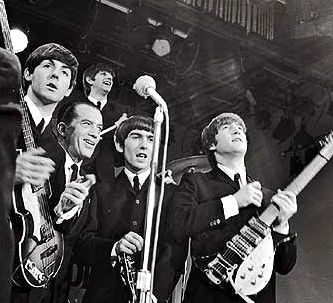
Known by earlier names such as The Quarrymen, Johnny & The Moondogs, and The Silver Beatles, they played a variety of venues, with a change or two in personnel during those early years.
In Hamburg, Germany, and Liverpool, England, from about 1960 on, they worked hard and steadily in nightclubs, putting in long hours, improving their stage act, increasing their range of music, and writing their own songs. They were a cover band as well, as most English rock bands then were. They offered their own versions of Buddy Holly, Little Richard, Chuck Berry, Carl Perkins, Larry Williams, and others.
By late 1961, they were playing to packed houses at the Cavern nightclub in Liverpool, England where they were discovered by their manager-to-be Brian Epstein in November 1961. Epstein did a wardrobe and style make-over on them, cleaning them up for the music industry. By May 1962, after being rejected by a number of U.K. record labels, they signed a deal with EMI, then the U.K.’s leading music company.
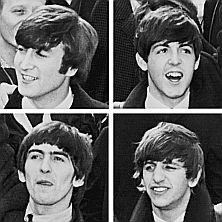
The Beatles’ first U.K. album was titled Please Please Me , released in April of 1963. Within four weeks it would be the No.1 U.K. album, remaining in that position for 30 weeks, followed by their second U.K. album, With the Beatles . From then on, there came a string of No. 1 Beatles’ hits and No. 1 albums until the group broke up in 1969-1970.
In the American music industry, however, there was an initial hesitancy about the Beatles, as some record executives and DJs, especially in 1963, didn’t think that British acts generally would do well in America. That perspective would soon change.
What follows below is a timeline marking the rise of Beatles’ music and appearances in the U.S. during 1963 and 1964, along with a few photos, anecdotes, and sidebar stories. It is not a complete and comprehensive treatment of the Beatles’ activities during these years, nor is it meant to be. There are entire books and websites devoted to that topic, some of which are noted in “Sources & Additional Information” at the end of this article. What is offered here, hopefully, is a representative sampling of activity in those first two “Beatles-in-America” years, mixing in music history, business developments, and news-of-the-times — plus one or two stories that may be new to many readers.
_______________________________________________________
“Beatles-in-America Timeline” 1963-1964

25 Jan 1963 Vee-Jay record label of Chicago obtains a contract to release limited number of Beatles records in the U.S. for a limited time period.
25 Feb 1963 “Please Please Me”/ “Ask Me Why” released as single on Vee-Jay label. The song is played on Chicago’s WLS radio station by DJ Dick Biondi (making him the first American DJ to play Beatles music). The song reaches No. 35 on the WLS music survey in March. However, the song does not chart nationally; not on Billboard .
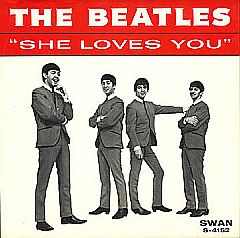
16 Sept 1963 “She Loves You” / “I’ll Get You” released in U.S. by Swan Records, a Philadelphia label, but does not chart on Billboard .
31 Oct 1963 American TV variety show host, Ed Sullivan, traveling to London, has his arrival delayed at London Heathrow Airport by a screaming crowd of teens welcoming the Beatles home from a tour of Sweden. Sullivan has his first thoughts of booking these rising British music stars with strange haircuts — perhaps as novelty act.
11-12 Nov 1963 Beatles manager Brian Epstein travels to New York and persuades Ed Sullivan to book the Beatles for an unprecedented three consecutive appearances on Sullivan’s much-watched Sunday evening variety show — February 9th, 16th and 23rd, 1964. CBS-TV gets one year’s exclusive rights to the Beatles’ U.S. television appearances.
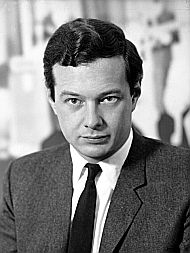
16 Nov1963 CBS News bureau London — at the suggestion of Beatles’ manager Brian Epstein — sends a news crew to the British seaside resort of Bournemouth where they film a Beatles concert, thousands of screaming fans, and a few Beatles’ comments on camera. This film clip is later sent to New York.
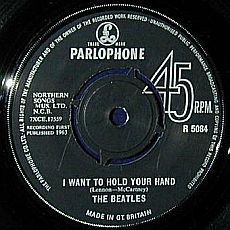
18 Nov 1963 NBC’s evening news program, The Huntley-Brinkley Report, airs a four-minute segment on the Beatles.
22 Nov 1963 U.K. album, With The Beatles, is released in the U.K., rising to No. 1 on the British album charts and remaining there for 21 weeks. With The Beatles becomes the Beatles’ first million-selling album in Britain, and the second album of any kind in Britain to sell one million copies, the first being the South Pacific soundtrack.
22 Nov 1963 The “ CBS Morning News With Mike Wallace ” runs a story on the Beatles for the network’s morning news show. CBS planned to repeat the segment that evening on Walter Cronkite’s newscast. However, that day, in mid afternoon, Walter Cronkite was breaking the tragic news to a shocked nation that their President, John F. Kennedy, had been shot and killed while visiting Dallas, Texas.
29 Nov 1963 The Beatles’ single “I Want To Hold Your Hand” is released in the U.K. and immediately hits No. 1 on the British pop charts.
29 Nov 1963 Radio station KIOA in Des Moines, Iowa begins playing “I Saw Her Standing There” from a Drake University student’s copy of Beatle’s U.K. album, Please Please Me, and a few days later, “I Want to Hold Your Hand,” from a U.K. Beatles’ single (see sidebar story below).
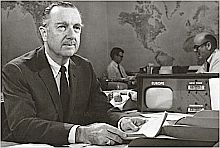
4 Dec 1963 Capitol Records issues a press release announcing that it will begin selling the Beatles’ first U.S. 45 rpm single, “I Want To Hold Your Hand,” on Monday, January 13th, 1964.
10 Dec 1963 A four-minute CBS film segment on The Beatles that had been pre-empted by the JFK tragedy is aired on Walter Cronkite’s CBS Evening News .
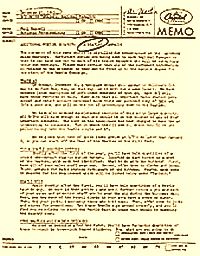
18-19 Dec 1963 Capitol Records threatens to sue WWDC to stop playing song, but then reverses itself and decides to rush-release “I Want To Hold Your Hand,” previously scheduled for January 13, 1964. Christmas leave is canceled at Capitol Records, as pressing plants and staff gear up for rush release.
23 Dec 1963 Capitol Records issues a memo to its sales people and regional managers across the country, outlining an extensive “Beatles Campaign” using various promotional items — from major music magazine trade ads and a fake tabloid Beatles newspaper (reprinted in the thousands), to Beatle buttons, Beatle stickers, Beatle wigs, and a battery-powered, “Beatles-in-motion,” bobble-head-like, window display for music stores.
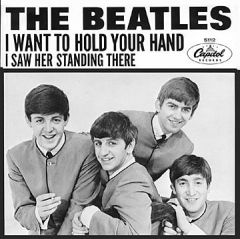
28 Dec 1963 The New Yorker magazine publishes a Brian Epstein interview; regarded as first serious article in U.S. about the Beatles and their manager.
29 Dec 1963 New York city radio station WMCA joins others broadcasting “I Want To Hold Your Hand.” Back in London, meanwhile, Sunday Times critic Richard Buckle praises the Beatles as the greatest composers since Beethoven.
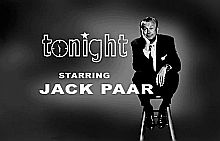
10 Jan 1964 Vee-Jay Records releases the first Beatles album in the U.S., Introducing…The Beatles. Legal and business issues plague the album, but by late fall, it would sell more than 1.3 million copies.
10 Jan 1964 Two weeks after the Capitol Records release of “I Want To Hold Your Hand,” sales hit 1 million copies — a staggering number at that time for an unknown music group from overseas.
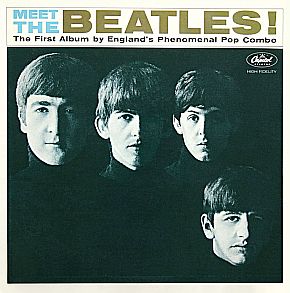
17 Jan 1964 “I Want to Hold Your Hand” by The Beatles is the No. 1 single in America.
20 Jan 1964 Capitol Records issues Meet the Beatles , the Beatles’ first Capitol album in the U.S.
20 Jan 1964 To promote the Meet The Beatles album and their upcoming first American visit, Capitol Records distributes pre-recorded interview with the Beatles to American radio stations.
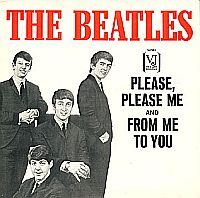
30 Jan 1964 Vee-Jay Records releases, for the second time, the single “Please Please Me” / “From Me to You,” entering the Billboard chart at No. 69. It would later reach No. 3, and Vee-Jay would sell at least 1.1 million copies.
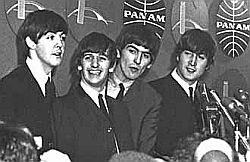
9 Feb 1964 Elvis Presley sends The Beatles a telegram wishing them well in their upcoming Ed Sullivan Show appearance later that evening.
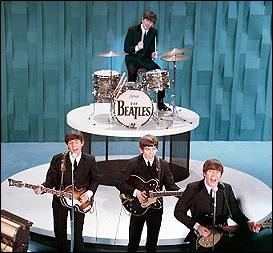
11 Feb 1964 The Beatles give their first live concert performance in the U.S. at the Washington Coliseum in Washington, D.C.
12 Feb 1964 The Beatles perform two shows at Carnegie Hall in New York City.
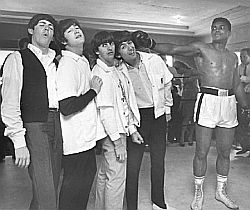
22 Feb 1964 The Beatles return to London, U.K.; at Heathrow Airport at 7 a.m. they are met by an estimated 10,000 fans.
23 Feb 1964 Beatles appear for 3rd time on Ed Sullivan Show , a performance that was taped earlier in New York — performing three songs: “Twist and Shout”, “Please Please Me” and “I Want to Hold your Hand.”
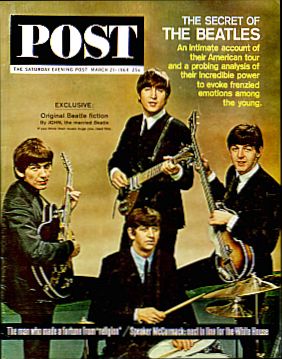
14 Mar 1964 “Please Please Me” is a massive hit, rising to No. 3 on the Billboard Hot 100 chart by this date.
16 Mar 1964 “Can’t Buy Me Love/You Can’t Do That” is released as single by Capitol Records; sells 940,225 copies first day, 2.1 million by March 19th.
21 Mar 1964 Beatles appear on the cover of The Saturday Evening Post , one of America’s mainstream magazines at the time. Post’s cover story — “The Secrets of The Beatles” — promises “an intimate account of their American tour and a probing analysis of their incredible power to excite frenzied emotions among the young.”
23 Mar 1964 “Do You Want to Know a Secret” / “Thank You Girl” released as a Vee-Jay single.
28 Mar 1964 Capitol Records reports sales of “I Want To Hold Your Hand” in excess of 3.4 million copies.
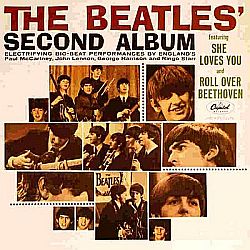
31 Mar 1964 The Beatles hold the top five slots on Billboard : (1) Can’t Buy Me Love, (2) Twist and Shout, (3) She Loves You, (4) I Want To Hold Your Hand (5) Please Please Me — a musical first.
10 Apr 1964 The Beatles’ Second Album is released by Capitol Records, which replaces the Beatles first Capitol album, Meet The Beatles , at No. 1 on the Billboard album chart from May 5th to June 2nd.
11 Apr 1964 The Beatles hold 14 slots on Billboard’s Hot 100 chart.
14 Apr 1964 The Beatles’ Second Album reaches $1 million in sales by this date.
27 April 1964 “Love Me Do”/ “P.S I Love You” released as single by Tollie Records, a Vee-Jay subsidiary.

June 1964 Advance orders for the soundtrack album from the Beatles’ forthcoming film, A Hard Day’s Night, are 250,000 in the U.K. and 1 million in the U.S.; album would sell 2 million copies in the U.S. by October, and 600,000 in the U.K. by year’s end. American version, with somewhat different songs, was released on June 26, 1964 by United Artists Records.

13 July 1964 “A Hard Day’s Night” / “I Should Have Known Better” released as single by Capitol Records.
20 July 1964 “I’ll Cry Instead”/ “I’m Happy Just To Dance With You” released as single by Capitol Records.
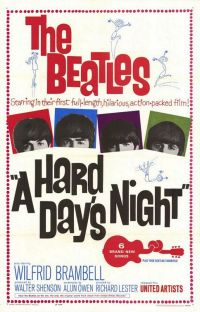
11 Aug 1964 Beatles first film, A Hard Day’s Night , opens in America and is a huge hit. Shown in 500 theaters across U.S., it earns $1.3 million in the first week. Some 15,000 prints made for world-wide distribution — historical first in film industry.
12 Aug 1964 Variety magazine reports that by August 1964, the Beatles had sold approximately 80 million records globally.
19 Aug 1964 The Beatles perform at the Cow Palace in San Francisco, California, in the first concert of their USA/Canada tour, which lasts a month through August and September.
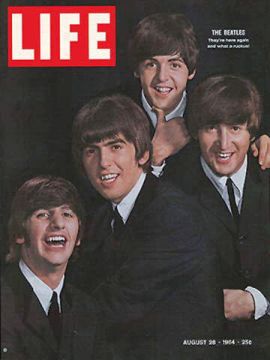
August 1964 The Beatles received a request from the White House press office to be photographed with President Lyndon B. Johnson, laying a wreath on the grave of John F. Kennedy. The request was politely declined by their manager, Brian Epstein, saying it was not the group’s policy to accept “official” invitations.
25 Aug 1964 The Beatles’ single, “A Hard Day’s Night,” is certified gold for exceeding sales of more than 1 million copies.
26 Aug 1964 Beatles’ North American tour plays Denver, Colorado.
27 Aug 1964 Beatles’ North American tour plays Cincinnati, Ohio.
28 Aug 1964 Life magazine article reports that the Beatles’ 33-day tour of 23 American cities is a sell out at every location and is expected to gross millions. Beatles pandemonium at the time is such that some hotels along the tour route refused to house the Beatles, and Los Angeles’ Lockheed Airport forbad any Beatles plane from landing there for fear of screaming fans running on to the tarmac.
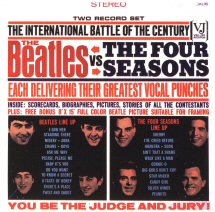
1 Oct 1964 The Beatles vs. The Four Seasons two-record set is released by Vee-Jay Records. Package is basically two previous albums — 1963’s Golden Hits of the 4 Seasons and VJ’s Beatles album, Introducing The Beatles. VJ hypes the package as “The International Battle of the Century!”
1 Oct 1964 Book by Brian Epstein, A Cellarful of Noise , is released by Souvenir Press; includes his autobiography and inside account of early Beatles. Later edition issued in 1998 by Byron Preiss Multimedia Books.
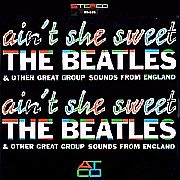
5 Oct 1964 Ain’t She Sweet album is released by Atco Records, an American album featuring four 1961 Beatles tracks from Hamburg, Germany and cover versions by other British groups.
13 Nov 1964 CBS TV shows a 50-minute doc- umentary, “What’s Happening! The Beatles in the U.S.A.,” filmed by Albert Maysles, covering the Beatles U.S. tour and other activities that year.
23 Nov 1964 “I Feel Fine” / “She’s a Woman” single released by Capitol Records.
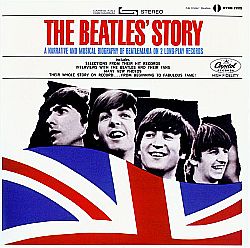
1 Dec 1964 Ringo Starr has his tonsils removed at the University College Hospital in London.
15 Dec 1964 Beatles ’65 album is released by Capitol Records featuring 11 Beatles’ cuts, among them: “I’m a Loser,” “Baby’s in Black,” “I’ll Follow the Sun,” “Mr. Moonlight,” “Honey Don’t,” “I’ll Be Back,” “She’s a Woman,” and “I Feel Fine.”
December 1964 Christmas recordings, with Christmas songs and messages from individual Beatles, are sent to fan club members in the U.K and U.S.

The 7th Grammy Awards, held in 1965, recognized the accomplishments of musicians for the year 1964. This was the year musically when Barbra Streisand won a Best Vocal Performance award for “People,” and Louis Armstrong for “Hello, Dolly!”; the year Stan Getz and Astrud Gilberto won Record of the Year for “The Girl from Ipanema,” and songwriter Jerry Herman, Song of the Year, for “Hello, Dolly!” 1964 was also the year that Henri Mancini won a Grammy for the “Pink Panther Theme” and Roger Miller took home several Country & Western music awards, while Nancy Wilson won Best Rhythm & Blues Recording, Petula Clark for “Downtown,” and Gale Garnett, Best Folk Recording for, “We’ll Sing in the Sunshine.” Not to be left out, of course, The Beatles won two awards: Best New Artist and Best Performance by a Vocal Group for “A Hard Day’s Night.” But the Beatles’ 1964 arrival left its mark on more than music awards.
A Sound of Change
The Beatles’ bursting onto the music scene of 1963-64 with their numerous popular songs has been described by some historians as a rare “pop explosion” — a musical infusion lasting basically four years, 1963-1967. This Beatles’ infusion, however, produced change that would last much longer than four years, not only in music but more broadly throughout popular culture — in fashion, literature, politics and beyond. But it would all start with the music, especially that first flush of Beatles’ songs in 1963-64. What the Beatles had then, according to rock music historian Greil Marcus writing for The Rolling Stone Illustrated History of Rock & Roll , “was that elusive rock treasure, a new sound — and a new sound that could not be exhausted in the course of one brief flurry on the charts.”
This new Beatles’ sound, according to Marcus, is best captured in a selection of their 1963-64 tunes, such as: “Please Please Me,” “I Saw Her Standing There,” “Boys,” “There’s A Place,” “It Won’t Be Long,” “All My Loving,” “She Loves You,” “A Hard Day’s Night,” “Things We Said Today,” “Eight Days A Week,” among others. This Beatles’ sound, at that time, was different and unique — exciting, optimistic, playful, and fresh. Also unique was what the Beatles did together musically — i.e., their group dynamic; beat, rhythm, vocals, composition, etc. — yielding a very high level of music quality. It blew away most of the competition. In fact, what the Beatles had in this case was “so fluid and intelligent,” says Greil Marcus, “that for years they made nearly everything else on the radio sound faintly stupid.”
Between January and March 1964, the Beatles accounted for 60 percent of all record sales in the U.S. In 1964 alone, the Beatles put 19 hit songs in the Top 40, and 30 in the Top 100. They had 15 separate recordings in 1964 — nine singles and six albums — that each sold 1 million or more copies, representing total Beatle sales in the U.S. that one year of more than 25 million copies. That feat has never been matched. Many of the Beatles’ songs from 1964 went on to enjoy continued success. “I Want To Hold Your Hand” would proceed to have worldwide sales of 15 million copies, the largest-selling single in rock history until Elton John’s 1997 version of “Candle in the Wind” for Princess Diana, eclipsed it. “Can’t Buy Me Love” would have worldwide sales of 6 million; “She Loves You,” 5 million, and several others from that year each surpassing 2 million or more copies.
On Billboard , the prominent U.S. music chart that reflects single and album popularity and success, the Beatles set a slew of records, most in the March-April 1964 period, but a few of which still stand today. Among their marks in 1964: most songs on the Billboard Hot 100 chart at the same time (14); most songs within the Billboard Top 40 ranking at the same time (7, on two occasions); most songs within the Billboard Top 10 and Billboard Top 5 at the same time (5); and most songs charting on the Billboard Hot 100 within a calendar year (30). On April 4, 1964, Beatles’ singles and albums simultaneously held the top five Billboard singles spots and the top two Billboard album ratings — a record that still stands.
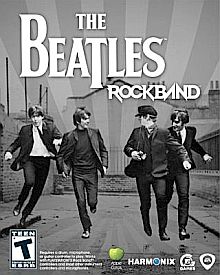
Today, more than 40 years after the Beatles’ musical explosion of 1963-64, their music from that era is still a cultural and business phenomenon. By September 2009, Beatles’ songs from the 1960s were being used again to form a major new Beatles’ business built around family-based video games. And in November 2010, Beatles’ songs were made available on iTunes and similar digital media.
In any case, the sales of Beatles’ music — whether for video games or digital media — will only add to the 1.6 billion singles and albums already credited to their legacy.
See also at this website other Beatles stories, including: “Beatles’ D.C. Gig: 1964,” featuring their first live performance in America; “Dear Prudence: 1967-68,” which includes the famous Beatles song of that name and detail on their trip to India at that time;’ and “Tomorrow Never Knows,” a profile of the group in 1966 and an early psychedelic-era Beatles song that also made a cameo in a 2015 MadMen TV episode.
A Beatles “topics page” can also be found at “Beatles History.” For additional stories that profile other popular music, artists, and various uses of music in politics, advertising and film, see the “Annals of Music” page.
Thanks for visiting – and if you like what you find here, please make a donation to help support the research and writing at this website. Thank you. – Jack Doyle
____________________________
Date Posted: 20 September 2009 Last Update: 27 January 2024 Comments to: [email protected]
Article Citation: Jack Doyle, “Beatles in America, 1963-1964,” PopHistoryDig.com , September 20, 2009.
______________________________
Beatles Music at Amazon.com …
Sources, Links & Additional Information [Note: Click on images in right-hand column for related Amazon.com pages]
“The Beatles,” in Holly George-Warren and Patricia Romanowski (eds), The Rolling Stone Encyclopedia of Rock & Roll , Rolling Stone Press, New York, 3rd Edition, 2001, pp. 56-59.
“Singers: The New Madness,” Time , Friday, November 15, 1963.
Stephen Watts, “Nonconformists and Newcomers on the British Screen; Anomaly Universal “Beatles” Rising Star,” New York Times , Sunday, November 24, 1963, Arts & Leisure, p. 35.
Frederick Lewis, London, “Britons Succumb To ‘Beatlemania’,” New York Times Magazine , Sunday, December 1, 1963.
Lawrence Malkin, “Liverpudlian Frenzy; British Beatles Sing Up a Teen-Age Storm,” Los Angeles Times , December 29, 1963, p. G-4.
Ann Rauscher, “ The Beatles in America: We Loved Them, Yeah, Yeah, Yeah ,” Newseum, Washington D.C., February 5, 2009.
Paul Russell, National Album Merchandising Manager, Capitol Records, Memo to B/D Sales Managers, Regional Managers, “Additional Meeting Subject: The Beatles! Campaign,” December 23, 1963, 2 pp.
Jack Gould, “TV: It’s the Beatles (Yeah, Yeah, Yeah); Paar Presents British Singers on Film,” New York Times , Saturday, January 4, 1964, Business, p 47.
Bob Scott, “Beatles Bounce Over,” Los Angeles Times , January 26, 1964, p. A-24.
Capitol Records, Inc., Press Release, “What’s Happening in Beatleland …,” January 29, 1964.
CBS, Inc., Press Release, “The Beatles to Make Three Appearances on Sullivan Show,” February 3, 1964.
CBS, Inc., Press Release, “Beatles Will Sing Their Number One Hit on the Ed Sullivan Show,” February 5, 1964.
Paul Gardner, “3,000 Fans Greet British Beatles; 4 Rock ‘n’ Roll Performers Hailed by Teen-Agers,” New York Times , Saturday, February 8, 1964, Food & Fashion, p. 25.
“‘Beatles’ Descend on New York; Teen-Agers Frantic,” Washington Post-Times Herald , February 8, 1964; p. A-4.
“Girls Go Bug-Eyed as Beatles Perform,” Los Angeles Times , February 10, 1964, p. 2.
L. Laurent, “Beatles Set Back Cultural Exchange,” Washington Post-Times Herald , February 12, 1964, p. C-7.
Jerry Doolittle, “Beatles Arrive, Teen-Agers Shriek, Police Do Their Duty, and That’s That,” The Washington Post-Times Herald , February 12, 1964, p. 1.
“Teen-Agers in Capital Squeal for Beatles,” Los Angeles Times , February 12, 1964, p. 14.
John S. Wilson, “2,900-Voice Chorus Joins the Beatles; Audience Shrieks and Bays and Ululates,” New York Times , February 13, 1964.
Bill Henry, “Yeah, Yeah for Those Beatles,” Los Angeles Times , February 14, 1964, p. A-1.
United Press International, “4,000 Hail Beatles on Arrival in Miami,” New York Times , Friday, February 14, 1964, p. 16.
John A. Osmundsen, “Peoplewise, the Beatles Provide New Study for the Sociologists,” New York Times , Monday, February 17, 1964, p. 1.
“Reds Claim Beatles Blind Youth to Woe,” Los Angeles Times , February 18, 1964, p. 17.
“Beatles Depart for Britain As 4,000 Admirers Scream,” New York Times , Saturday, February 22, 1964, Food & Fashion, p. 18.
Ronald J. Ostrow, “Beatles to Launch Theater Tele- vision,” Los Angeles Times , February 19, 1964, p. B-8.
“Singers: The Unbarbershopped Quartet,” Time , Friday, February 21, 1964.
“ The Beatles in the United States ,” Wikipedia.org , viewed September 2009.
“ Please Please Me ” (song), Wikipedia.org , viewed, September 2009.
John Whelan, “ The Beatles Timeline ,” Ottawa Beatles Site , January 1, 2000.
Saki & Ed Chenn, “ American Bandstand and the Fabs ,” Newsgroups: RecMusicBeatles, no date.
D. Lowe, Thomas Whiteside, The Talk of the Town, “Beatle Man,” The New Yorker , December 28, 1963, p. 23.
“Politician Cites Beatles,” Washington Post-Times Herald , March 9, 1964, p. A-9.
“Beatles Are Praised By Duke Ellington,” Washington Post-Times Herald , March 10, 1964, p. A-3.
“2 Million Will View Beatles at 170 Theaters,” Los Angeles Times , March 13, 1964, p. C-17.
“Song Writer Medal Presented Beatles,” Washington Post-Times Herald , March 23, 1964. p. B-23.
“Beatles Honored for Contribution to British Music,” Los Angeles Times , March 23, 1964, p. 23.
“Beatles Are Toppled From Hit Parade Peak,” Washington Post-Times Herald , April 15, 1964, p. A-2.
Gene Sherman, “The Man Behind the Beatles,” Los Angeles Times , May 3, 1964, p. B-1.
“250,000 Hail Beatles in Australia,” Los Angeles Times , June 15, 1964, p. 4.
“Beatles to Sing Six New Tunes in Their Movie,” Los Angeles Times , August 11, 1964, p. C-9.
“Yeah? Yeah. Yeah!: Yeah? Yeah. Yeah!,” Time , Friday, August 14, 1964.
“The Beatles Started It All,” Washington Post-Times Herald , August 14, 1964, p. C-5.
Hedda Hopper, “‘Hard Day’s Night’ Beatles’ Bonanza,” Los Angeles Times , August 15, 1964, p. B-6.
Penelope Gilliatt, “The Beatles in Their Own Right,” Washington Post-Times Herald , August 16, 1964, p. G-1.
Daryl Lembke, “Hysterical Fans Greet Beatles Here and in S.F.,” Los Angeles Times , August 19, 1964, p. A-1.
Louella Parsons, “Vegas Took the Beatles in Stride,” Washington Post-Times Herald , August 26, 1964, p. A-18.
“Britain: The Beatle Business,” Time , Friday, October 2, 1964.
Myra MacPherson, “Help! The Day The Mania Came To Washington,” Washington Post , February 7, 1984.
Dennis McLellan, “Alan W. Livingston Dies at 91; Former President of Capitol Records,” Los Angles Times , March 14, 2009.
Martin Lewis, “ Tweet The Beatles! How Walter Cronkite Sent The Beatles Viral… in 1963 !,” The Huffington Post , July 18, 2009.
Fred Bronson The Billboard Book of Number 1 Hits, Billboard Books, 5th edition, October 2003, 1,008 pp.
Bruce Spizer, Songs, Pictures and Stories of the Fabulous Beatles Records on Vee-Jay , Four Ninety-Eight Productions, April 1998, 242 pp.
Bruce Spizer, The Beatles Swan Song: She Loves You & Other Records , Four Ninety-Eight Productions, March 2007, 280 pp.
Bruce Spizer, The Beatles Are Coming! The Birth of Beatlemania in America , Four Ninety-Eight Productions, December 2003, 246 pp.
Stu Adams, “ Defining Moments of The ’60’s at KIOA ,” DesMoinesBroadcasting.com.
“ List of The Beatles’ Record Sales ,” Wikipedia.org , viewed September 2009.
“ The Beatles Interviews Database ” (with photos), Beatles Ultimate Experience , viewed, Sept 2009.
Beatles On The Charts, 1963 to1964, Dermon.com , According to Billboard Magazine.
“ Beatles Record Sleeves ,” RareBeatles.com.
Hank Bordowitz, Turning Points in Rock and Roll , New York: Citadel Press/Kensington Publishing, 2004, 282 pp.
Greil Marcus, “The Beatles,” in Anthony DeCurtis and James Henke, with Holly George-Warren (eds), The Rolling Stone Illustrated History of Rock n Roll , New York: Random House, revised edition, 1992, pp. 209-222.
Martin Goldsmith, The Beatles Come to America , J. Wiley & Sons, January 2004, 208 pp.
John C. Winn. Way Beyond Compare: The Beatles’ Recorded Legacy, Volume One — 1957-1965, Three Rivers Press, 416pp, 2008, and That Magic Feeling: the Beatles’ Recorded Legacy, Volume Two — 1966-1970 , Three Rivers Press, 416pp, 2009.
Philip Norman, Shout!: The Beatles in Their Generation ,” Simon and Schuster, 2005, revised edition, 546 pp.
Bob Spitz, The Beatles: The Biography , Little Brown, 2005.
Jonathan Gould, Can’t Buy Me Love: The Beatles , Britain and America , Piatkus Books, 2008.
“The First U.S. Visit: A Film by Albert and David Maysles,” DVD, Apple/Capitol Records, 1964, Revised 1990.
“The Beatles Anthology,” Directed by Geoff Wonfor, VHS, Apple/Capitol Records, DVD, Apple/Capitol Records, 1996.
“The Four Complete Historic Ed Sullivan Shows Featuring the Beatles,” VHS & DVD, Sofa Entertainment, 2003.
“The Beatles in Washington, D.C.,” Passport Video, 2003.
“Beatles Around the World,” DVD, Entertainment Properties, 2003.
Brian Epstein Website, BrianEpstein.com .
Beatles Books at Amazon.com …
The Pop History Dig is a website offering historical and topical stories on business, politics, and popular culture.

IMAGES
VIDEO
COMMENTS
The English rock group the Beatles toured the United States and Canada between 19 August and 20 September 1964. The 32 concerts comprised the second stage of a world tour that started with the band's tour of Europe, Hong Kong, and Australia and finished with their UK Autumn tour. The shows in the United States were a return to the country after ...
After firing Best and hiring Ringo Starr, the Beatles performed a series of concert tours throughout the UK in 1962-1963, before they left for the US in early 1964. As Beatlemania and the British Invasion came into full force, they began a world tour and continued to perform in the UK and US throughout 1965, including a well-known performance ...
The Beatles' 1964 tour of North America would forever change the concert industry. In February 1964, after finally achieving a number-one hit in America, the Fab Four came to the United States ...
The Beatles's 1964 Concert History. 156 Concerts. The Beatles were an English rock band formed in Liverpool in 1960. With the line-up comprising John Lennon, Paul McCartney, George Harrison and Ringo Starr, they are regarded as one of the most influential bands of all time. ... 1964 Dallas, Texas, United States Uploaded by Zimtrim. The Beatles ...
The English rock group the Beatles toured the United States and Canada between 19 August and 20 September 1964. The 32 concerts comprised the second stage of a world tour that started with the band's tour of Europe, Hong Kong, and Australia and finished with their UK Autumn tour. The shows in the United States were a return to the country after their brief February 1964 tour. Following the ...
On 9 February 1964 the Fab Four made their first live US television appearance on The Ed Sullivan Show. At 8 P.M, 73 million Americans saw John Paul, George and Ringo play. On 11 February 1964 The Beatles' performed in their first US concert, a show at Washington Coliseum, Washington, D.C.
The Beatles' 1964 North American tour. The Beatles 1964 world tour was the Beatles ' first world tour, launched after their 1964 UK tour. The reception was enthusiastic, with The Spectator describing it as "hysterical". It was followed by their subsequent North American tour in August that year.
The English rock group the Beatles toured the United States and Canada between 19 August and 20 September 1964. The 32 concerts comprised the second stage of a world tour that started with the band's tour of Europe, Hong Kong, and Australia and finished with their UK Autumn tour. The shows in the United States were a return to the country after ...
The Beatles in a session with Ed Sullivan prior to their February 9th, 1964 show. From left: Paul McCartney, Ed Sullivan, George Harrison, John Lennon, and behind & above, Ringo Starr. The Beatles became a sensation in the U.K. in 1962-63, about a year or more before anyone in the U. S. knew much about them.
The Beatles' 1964 tour of North America would forever change the concert industry. In February 1964, after finally achieving a number-one hit in America, the Fab Four came to the United States ...
1964 World Tour (47) Another Beatles Christmas Show (38) Asian Tour 1966 (7) Bravo Blitz Tour Through Germany 1966 (6) European Tour 1965 (17) Great Britain Tour 1965 (18) North American Tour 1964 (32) North American Tour 1965 (16) North American Tour 1966 (19) Scottish Tour 1960 (8) The Beatles 1963 Christmas Shows (31) UK Tour 1963 (202)
Get the The Beatles Setlist of the concert at Washington Coliseum, Washington, DC, USA on February 11, 1964 from the Winter 1964 US Tour and other The Beatles Setlists for free on setlist.fm! setlist.fm Add Setlist. Search Clear search text. follow ... The Beatles Kick Off Full North American Tour. Aug 18, 2023.
Relive the Beatles' first US tour in 1964, with photos, videos and stories from their historic visit. Discover how they conquered America and changed music history.
Finally here it is, after a long time of waiting, painstakingly re-editing and minor tweaking so all the songs would have enough footage to be covered, I can...
The English rock group the Beatles toured the United States and Canada between 19 August and 20 September 1964. The 32 concerts comprised the second stage of a world tour that started with the band's tour of Europe, Hong Kong, and Australia and finished with their UK Autumn tour. The shows in the United States were a return to the country after ...
Tuesday 11 February 1964 Live 16 Comments. The Beatles' first US concert was watched by a crowd of 8,092 fans at the Washington Coliseum in Washington, DC. The band had traveled from New York to Washington, DC early in the day by rail, as an East Coast snowstorm had caused all flights to be cancelled. A special sleeper carriage was attached ...
The British press are the toughest in the world - we could handle anything.". John. "In 1964 we played several concerts in Paris. The French audience was dreadful. We had visions of all these French girls, 'Ooh la la,' and all that, but the audience, at least on opening night, was all tuxedoed elderly people" George.
The first American concert by the Beatles was in D.C. Read an oral history of the landmark event. ... 1964, Beatlemania blasted Washington — all shrieks and Arthur haircuts and songs people ...
On February 7, 1964, Pan Am Yankee Clipper flight 101 from London Heathrow lands at New York's Kennedy Airport—and "Beatlemania" arrives. It was the first visit to the United States by the ...
Ringo. The Beatles First US Visit chronicles the remarkable two weeks in February 1964 that began America's still-enduring love affair with the group. The film of the frantic fortnight records the hysterical reaction to The Beatles US debut in a documentary that was the real-life inspiration for the Beatles movie A Hard Day's Night.
On February 11, 1964 the Beatles played their legendary first American concert at the Washington Coliseum. Watch the trailer of this legendary show here, you...
`The Jack Paar Show' transmits a fragment of a Beatles' concert at the Winters Garden, Bournemouth. ... Elvis Presley sends a congratulatory telegram to the Beatles. US `Herald Tribune', about the Beatles: 75% publicity, 20% haircuts and 5% cheerful mournings. ... Brian announces plans for the Beatles 1964 Christmas Show, to be presented at the ...
The Beatles staged their third and final concert tour of North America in August 1966. It consisted of 18 performances, with 16 shows in United States venues and two in Canada.The tour was plagued with backlash regarding the controversy of John Lennon's remark about the Beatles being "more popular than Jesus", death threats, and the band's own dissatisfaction with the noise levels and their ...
In February 1964, the Beatles arrived in the United States and their televised performances on The Ed Sullivan Show were viewed by approximately 73 million people. There, the band's instant popularity established their international stature, and their unprecedented domination of the national sales charts was mirrored in numerous other countries.
Crosley Radio is releasing a limited-edition product, the 1964 Beatles Mini 3 Inch Turntable, in celebration of the 60th anniversary of the band's first American concert tour. The 1964 Beatles Mini Record Player pays homage to The Beatles' first ever American performance on the Ed Sullivan Show which was viewed by a then record setting audience of 75 million people and kicked off the arrival ...